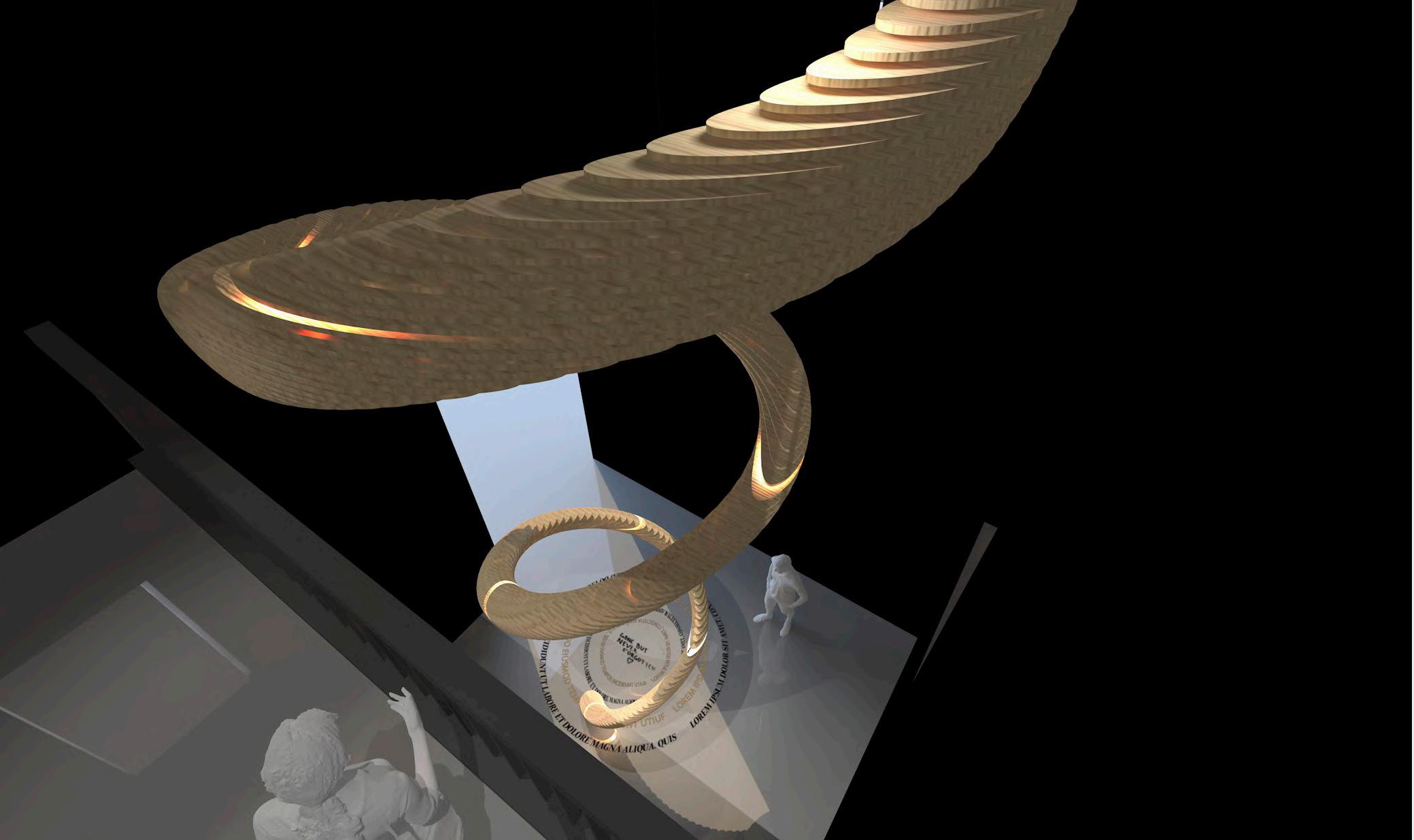ETZ HAYIM


HOUSE OF FATES

SD CONCEPT AND SCRIPT












The history of the Holocaust in Hungary is extremely complex, nuanced and unique. From the mid-nineteenth century, Hungary’s Jewish community lived generally, in an overall tolerant society, and often acquired a strong sense of Hungarian identity. Jews increasingly contributed to the modernization of civic society and participated broadly in politics and social life. However, the First World War and its peace treaties, which deprived Hungary of two thirds of its former territories, and the general geopolitical and sociopolitical chaos at the time, led to growing antisemitism.
During the Second World War, Hungary was first a German ally but later became occupied by Germany. Compared to neighboring countries, Hungarian Jews lived through most of the war in relative physical safety, despite discriminatory laws. This, however, only lasted until the German occupation in March 1944, when ultimately deportations took place at an unprecedented speed and with the active cooperation of Hungarian government administration. Still, the majority of Jews in the capital, Budapest, survived the war. These factors, combined with many additional details create a complex and complicated narrative, filled with many and often contradictory nuances that defy superficial generalizations and simple cause and effect accounts.
Most children and young people today do not have much deep knowledge regarding this gripping era, and their superficial familiarity with the era is often overshadowed by political and social conflicts as a result of the quality of post-war public discourse. One of the most important lessons for those learning about the history of the Holocaust today is recognizing the significance of minute, individual decisions underpinning dramatic historical events or series of events. We may argue, that never in the course of human history have we ever come across a series of events, that is more suitable for demonstrating, that in the process of experiencing historical events individuals don’t generally see history but personal life episodes or single events. Just as the life of a single person only reveals its coherent structure in retrospect, so are even cataclysmic historical events only an amalgamation of millions of individual decisions and compromises.
Therefore, we must create a context for the re-telling of the history of the Hungarian Holocaust that can form the basis for acquiring a perspective that is capable of seeing broader connections; a context which enables the visitor to recognize the relationships between different historical events.

Still, our most crucial task is to present this nuanced, complex and unique period of history in a way that will enrich our audiences with emotional and moral values and touch them deeply on a personal level. For this goal, our storytelling must be thought-provoking on cognitive, emotional, and moral/ethical levels simultaneously.
By demonstrating this point, the narrative of Holocaust history can serve us with an important moral lesson concerning the significance of bearing responsibility for each and every act or decision. Each individual decision comes with a consequence, and accepting this responsibility is one of the most crucial challenges we have as human beings. This will also reveal the paramount significance of individual responsibility and collective governmental accountability. Try as we might, we could not find a more poignant tool to showcase these themes other than the Holocaust.
The of this document, is to present our approach to the permanent exhibit of the House of Fates, Holocaust Museum in Budapest. An approach which is based on the above elaborated foundations. An approach that will enable us to create an individual narrative for the uniquely Hungarian aspects of the Holocaust in an institution that is exceptional in the world. Establishing such an institution is not without serious intellectual and moral responsibility. We have invited accomplished professionals – experts in exhibition design, Holocaust research and presentation – with decades of experience in setting up similarly ambitious projects.
Our Etz Hayim Schematic Design Plan is the outcome of many months of rigorous study of possible themes and approaches, and in-depth analysis, discussions and interviews with several Hungar-
ian and international experts. The purpose of this document is to help individuals understand the stages of developing this museum, to create a unified vision and to present the foundations of the detailed design. Remembering the Holocaust in the 2020’s, in Hungary is certainly a challenge, but that makes it all the more important. The past 30 years have seen more and more mention of the Holocaust in the Hungarian public discourse but simultaneously, there is a growing rejection of the subject in society. Almost 20% of Hungarians deny that the Holocaust took place. We talk more about the Holocaust but somehow not in the right way! The concept of our new exhibition is to attempt to find a novel approach, one that is also deeply rooted in Jewish tradition, to remember and to remind others. This approach will prove to be meaningful to wider society by presenting relevant and inspiring values. Budapest, July,

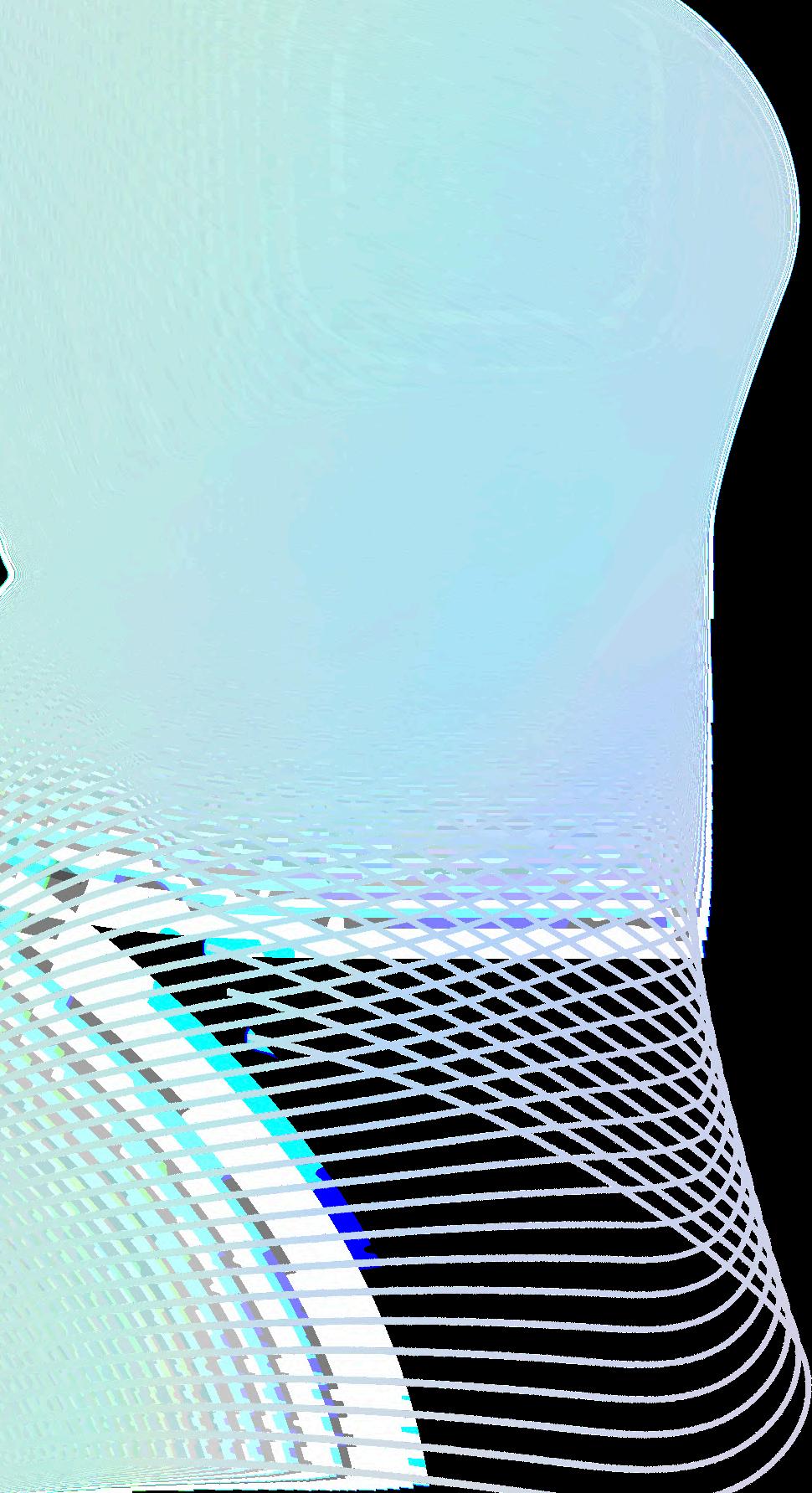

In autumn 2013, in preparation for the 70th anniversary of the Hungarian Holocaust, the government of Hungary announced plans to erect a large Holocaust Memorial and museum at one the last locations of Hungarian deportations – Józsefváros Railway Station. The center was named House of Fates. The exhibition, educational and research center and memorial is several thousand square meters in area on which the future museum building construction was completed by. After years of debate over the central exhibition’s design, in 2018, the Hungarian government entrusted EMIH – the Association of Hungarian Jewish Communities with the development of a novel exhibition concept. After two years of intense creative work, EMIH, in partnership with Hungarian and international experts, created such a concept. It is based on the tradition of Jewish ideals and guided by the urge to find the moral standards essential for human existence while narrating one of the greatest dramas in history.
Following the government’s decision in September, 2018, EMIH invited eminent Hungarian and international experts to develop and draw up plans for the exhibition.
Leading curator
Former director of Yad Vashem Israeli history museum, (1983-1995), museum development expert (e.g. Kiev, Jerusalem, Montreal, NY, Moscow)
In Jewish tradition the primary significance of remembering is not political or social management, but is integral to each individual’s character development. Jews have practiced meaningful remembrance of age-old events for thousands of years. By demonstrating inspiring values that continue to be relevant for all times, the philosophy of traditional Jewish remembrance is able to remain meaningful. The symbol of these perpetual values and the eternal superiority and victory of life is the “Tree of Life”, Etz Hayim, which we found to be the most fitting name for the novel concept.
The Etz Hayim exhibition concept is deeply integrated into the permanent exhibition, taking up around 30 % of the overall area of the Museum site. We recognize that in the remaining 60% of the institution, there is still much work to be done. In our long term plans we intend to give place for an integrative educational center, a special exhibit for the Roma holocaust, a uniquely tailored “children’s visitor center” and, in addition, a multifunctional cultural center.
Slomó Köves
Committee chairman
EMIH chief rabbi


Hungarian Jewish historian
Esther Farbstein
Curator
Holocaust historian, Israel

David Marwell
Historical and Museum consultant
Holocaust historian
Former director of Museum of Jewish Heritage, New York’s Holocaust Museum


Dániel Bodnár
Interpertive Consultant
EMIH management board member, professor of philosophy, president of Milton Friedman University

György Haraszti
Historical Consultant
Historian, president of Institute of Hungarian Jewish History at the Milton Friedman University
EMIH’s Steering Commitee is responsible for content development in partnership with its scientific, educational and academic advisors, in consultation with representatives of the government and with Washingtonbased Gallagher and Associates Museum Design, one of the world’s most renowned museum development companies.
With the needs and interests of these young people in mind, our central goals are to:
EMIH
HUNGARIAN HOLOCAUST RESEARCH AND EDUCATION CENTRE
GALLAGHER & ASSOCIATES MUSEUM DESIGN
HISTORICAL RESEARCHERS
INTERVIEWEES
HISTORICAL ADVISORY BOARD
CIVIL ADVISORY BOARD
EDUCATIONAL ADVISORY BOARD
HUNGARIAN GOVERNMENT
The House of Fates must be accessible and relevant for visitors of all backgrounds and ages. Its primary target audience, however, is young Hungarians, who usually have no personal experience and depth of knowledge of 20th century events. They are the primary audience for this authentic presentation of the human tragedy of the Holocaust, its civilisational, personal and moral lessons, of the country’s Jewish community and its persecution, as well as of Hungary’s wartime role. It is crucial that when representing the story to them, we go beyond the numbing Holocaust statistics to provide a powerful human perspective.
• Engage the intellectual and emotional attention and interest of our target audience;
• Offer ethical messages that provide “thought material” for the future;
• Communicate the relevance of this history to contemporary Hungarian society.
To achieve these goals, we believe that the museum and educational center should especially focus on:
• Telling the stories of children and young adult victims highlighting personal tragedies and individual stories;
• Providing a clear picture of Jews, especially of Hungarian Jews, how they preserved their communal values and worldview, before, during, and after the Holocaust;
• Highlighting the diverse manifestations of Jewish resistance during the Holocaust, both in Hungary as well as throughout Nazi-occupied Europe;
• Transmitting universal values such as education, the importance of helping those in need, the responsibility of spiritual leadership and demonstrating how these values are still relevant today;
• Telling unique personal stories of Hungarian heroes who chose, often at the risk of their own lives, to follow their conscience and rescue their persecuted compatriots.
The core concept of this proposed exhibition is to present the tragedy through the personal recollections of Holocaust survivors. It is also vital to show that both survivors and victims include many who made — or could have made — great contributions to science, literature and art. To that end, it is useful to spotlight well-known Hungarians who experienced the Holocaust as children, but who are now famous primarily for their personal achievements and intellectual contributions to society.





To that end, the museum will:
• Portray Jewish life in Hungary before the Holocaust, not simply to show what was destroyed, but also to help our audience understand the core values and defining characteristics of Hungarian Jewry over the centuries. It will emphasize in particular the extraordinary breadth and diversity of Hungary’s Jewish community, particularly from the unfolding of emancipation in the 1860s to the dismemberment of historical “Greater Hungary” after WWI;
• Clarify the singular and contradictory factors that characterized the Hungarian Jewish experience after the breakup of the Austro-Hungarian Empire and “Greater Hungary,” and the important elements of this experience, including anti-Jewish laws in the early 1920s and late 1930s — prior to WWII;
• Place Hungarian events in an overall European and Eastern European context;
The House of Fates will present a broad picture of the European Holocaust and its background, roots and impact. But it will still maintain a particular focus on the Hungarian aspect of the Holocaust story.
• Help audiences to understand that the Holocaust affected not only Jewish life, but the majority of Hungarian society as well. Most Hungarian Jews (including many Orthodox communities and denominations) expressly identified themselves as Hungarian, being fully a part of Hungarian society and culture. This sense of belonging defined the activities of many Hungarian Jews who worked to benefit the greater society in science, commerce, industry and culture. This identity — which continued for many, even during the most horrific times and the worst exclusions of the war era — strongly defined the relationship between Jews and Hungarian society.

Telling the singular history of the Hungarian Holocaust is daunting yet immensely important. The professionals involved in crafting the museum recognize the challenges and responsibility; and accept the task out of a deep sense of conviction that narrating this powerful example of inhumanity is only meaningful if it can offer a personal, moral lesson, instead of a trivial and general one. This task is further complicated by the fact that we will be telling the Holocaust story in a country where it happened—where citizens (or their parents and grandparents) were in some way touched by or directly involved in these events.
These personal connections demand that the narrative must be authentic and balanced. We must take care to avoid both the false
perception that all of Hungarian society was simply a victim of outside forces, as well as indicting Hungarian society as a whole. This is especially important since suggesting collective blame can create a sense of hopelessness and/or defensiveness in visitors, making it difficult, if not impossible, for them to accept, internalize, and learn from the past. Our audience will understand the complex reality of the Holocaust and empathize with its victims, only if we avoid stigmatizing Hungarian society as a whole and offer an uplifting message of hope by citing for example the stories of those who helped the persecuted.
In the 21st century, it is vital to point out Hungarian society’s mistakes and crimes of the era, but also to honor and celebrate instances of Hungarians’ moral strength and humanity.
How can we tell our story in ways that are simultaneously authentic and acceptable? How do we present a narrative in an environment where the key actors — perpetrators, victims, an indifferent majority, the ruling classes, political elites, and society as a whole — are not ‘faceless’ strangers from a distant land, but rather the parents, grandparents, or countrymen of our audience?
Such questions of how to frame the Holocaust arise not only in Hungary, but elsewhere as well, particularly in countries that were Germany’s allies in WWII. And yet, Hungary may in many aspects be unique and paradoxical even among these countries. Near the end of the war, when mass deportations began in Hungary, it was simultaneously a country allied with and occupied by Nazi Germany.
There are several other contradictions that make narrating the country’s Holocaust history challenging.
On one hand:
• Well before the German occupation of 1944, institutional antisemitism was a feature of Hungarian politics (discriminative legislation, forced Labor Battalions and politicians’ generally ambivalent attitude towards Jewry, etc.). In addition, the Kállay government’s fluctuating Jewish policy is itself unique in the European history of the Holocaust.
On the other hand:
• Budapest Jewry, for the most part, survived the period between March 19, 1944, and February 13, 1945, a phenomenon certainly miraculous and almost unprecedented in Europe.
• Despite an obvious sense of betrayal, many Hungarian Jews believed that the bonds of unity had not been severed completely. Despite anti-Jewish legislation many still trusted the Hungarian state and this false perception often proved fatal because it left them unprepared for the reality of deportations. Yet, this sense

of loyalty and trust reveals much about their objective situation and everyday experiences preceding the deportations. It facilitated a false understanding of the situation. Until the spring of 1944 there were no real ghettos and no compulsory wearing of the Jewish Star. Even the forced Labor Battalions may, for some, have offered a false sense of national solidarity as service to the national defense effort — despite its discriminatory nature and the regular brutality and humiliations. Deportations only started in the spring of 1944 but (or maybe because of this) they were, first of all, extremely swift and, second, carried out with the cooperation of Hungarian public administration and making full use of existing infrastructure, notably Hungarian police forces.
• Hungary is also unique because its Jewish population was so densely concentrated in the capital and the majority of those in Budapest survived the war. Most survivors remained in the country after the war, which makes the possible narratives of the story simultaneously more sensitive and yet also more hopeful.
Given these contradictions, it is worth giving careful consideration to how to paint an authentic yet suitably sensitive picture of the unique nature of the Hungarian Holocaust and the diverse roles of the Horthy regime and contemporary Hungarian society without oversimplifying the narrative. We want to offer all visitors personal, moral conclusions, so how do we convey a meaningful message without oversimplifying these complex events?
To create an authentic solution to these challenges, avoiding black and white oversimplification, and at the same time compressing that narrative into a 45–50 minute experience that a “casual” visitor can appreciate, requires both sensitivity and an acute awareness even at the preliminary stage of designing the exhibition. During the last few decades several great institutions took up the challenge of presenting the history of the Holocaust. Our Etz Hayim concept focuses on individuals. The purpose of our particular approach is to emphasize the context of moral aspects and thus offer an opportunity to understand the Holocaust as a meaningful piece of history enriched with personal moral lessons. Our approach is to present ideas and inspiring examples of how people chose to act. We wish to portray universal values through the narrative of personal stories.
To that end we will use five definitive narrative tools:
1. HISTORICAL CONTEXT
2. EMOTIONAL AND MORAL ENGAGEMENT
3. PERSONALISING THE STORY
4. THE JEWISH PERSPECTIVE
5. UP-TO-DATE LANGUAGE
We will create our historical context by presenting a full picture of modern Hungarian Jewish history. We will start with emancipation and the Golden Age and continue up until the present day. Our exhibition starts with ‘today’s perspective of the past and ends with ‘today’.
we should take care to highlight three critical themes:
• Present a broad overview of elements of Hungarian-Jewish coexistence, beginning with the emancipation of Jews in 1867 to the present day. This is essential for grasping the full complexity of the Hungarian Holocaust. We need to show that the perilous and violent relationship during the Holocaust was preceded by a period of both discrimination and especially prosperous interdependence. It is equally important to make it clear that the Jewish-Hungarian story did not end in 1945. The Jewish community is an organic and defining part of Hungarian society today; the remaining community’s continuity and revival are particularly important elements of contemporary Hungarian society.
The purpose of our exhibition is to present the facts of history, to invoke emotional engagement and empathy and especially, to elicit reflection on basic universal human values.
The House of Fates has the specific goal of telling the unique Hungarian Holocaust story. Despite this fact (and for this very purpose) it is essential for the exhibition to place that history in context. Given our time limitations, we cannot present the complete historical spectrum, but
• Place the narrative in its international context. The European political landscape at the time was almost without exception deeply tainted with the poison of anti-Jewish attitudes, rhetoric, and legislation. We cannot explore Hungarian trends independent of international tendencies.
• Provide a strong presentation of the death camps and the
Nazis’ systematic mass murder. Simply put, no Holocaust museum is complete without Auschwitz. The Final Solution conceived by the Nazis would have been unthinkable even for the most virulently antisemitic ideologies of the 19th century. The ‘scientific’ infrastructure of industrial mass murder was a unique crime of Nazi ideology and worldview against human civilization.
Many paradoxes of the Hungarian Holocaust spring from the often flourishing interdependence that had been emerging since the 19th century. By the early 20th century nearly all Hungarian Jews (including many Orthodox communities) considered themselves Hungarian, and large segments of Hungarian society accepted them as such. This bond of trust was nurtured by the moderation of the Bethlen era and its perception as mutual and unconditional made the anti-Jewish legislation of the late 1930s and especially the deportations of 1944 even more incomprehensible. We should encourage visitors to contemplate that even during the early spring of 1944, when most of Europe’s Jews had already been murdered in death camps, many Hungarian
Jews still felt some sense of security. This illusion persisted despite earlier anti-Jewish legislation, and despite many Jews having had the humiliating and inhumane experience of forced Labor Battalions. This perception laden with contradictions gave a sense of being humiliated by Hungarian society while simultaneously feeling oneself a part of Hungarian society. And this impression was responsible for a general conviction of a significant proportion of Hungarian Jews that deportations ‘just won’t happen to us.’ The sense of immense betrayal demonstrates that despite discrimination most Hungarian Jews considered the ties of mutual loyalty to the nation unbreakable.
Most Holocaust museums unintentionally end up focusing on Nazi ideology. Embedded in the universal history of antisem-
itism, they recount the birth and growth of Nazism. Visitors learn a lot about Nazism and antisemitism, but they get to know less about the resistance and defiance of Jewish victims as well as some of their non-Jewish helpers; how they all responded physically, spiritually or psychologically to this inhumane ideology. As a result, most museums portray evil and not the possibility of people combatting, resisting, or preventing evil.
We feel it is essential to emphasize the power of moral resistance. By presenting positive examples of cultural, religious, and spiritual values that provided strength to those who combatted and resisted Nazi ideology we can give hope.
It is also important to highlight the stories of non-Jews who risked their lives to help fellow citizens. If an exhibition wants to provide its audience with intellectual, emotional and moral inspiration, it should honor examples that gave hope amidst hopelessness. It should explicitly note the cultural, religious, and universal values — such as family, loyalty, perseverance, conscience, commitment, and faith — that can inspire all people to stand up for themselves and to protect themselves and others.
To this end, the exhibit should:
• Present both the human drama and the personal experiences of individuals —Jews and Hungarians — who lived through the historical events;
• Nurture an intimate connection to the historical participants, generating a powerful emotional response and messages that our audience will carry with them and ponder, long after the memory of historical facts and details has faded;
• Highlight the universal human values that helped and supported the victims;
• Highlight uniquely Hungarian Jewish forms of resistance against discrimination and deportation;
• Present a personalized Holocaust history, reminding visitors that genocide did not happen to impersonal masses but to individual people — very much like those of us living today;
• Acknowledge that each and every one of the people touched by the Holocaust was “an entire world” in himself. Or, as the Talmud says, “Whoever saves a life, it is considered as if he saved an entire world.”
First-person testimony — particularly focusing on the experiences of children — will provide us with an in-depth experience that resonates with compassion and universal relevance. This proven method lets visitors establish a personal relationship with the victims of this tragedy. It brings an irreplaceable and undeniable authenticity to the events and emotions described.
Personal accounts of survivors and saviors have a definitive role in the narrative. As we move from one topic to the next their stories should be integrated, thus personalizing particular episodes of bygone events for the visitors. Our content-development team already visited three continents to make high quality recordings of over 100 personal accounts. In addition to weaving survivor testimony throughout the exhibition, we propose creating short films highlighting the stories of four or five individual people. These films, based on original diaries (e.g., Hannah Szenes and Zsuzsi Gestetner) and video interviews, will let visitors create a deeper bond
of empathy with their stories. The films will be integrated at key points in the permanent exhibition as we plan its themes, content and layout. Additionally, new technology allows us to develop a brief appearance of people featuring in the short films thereby letting visitors “virtually” ask questions of them in the library or the research room. This technology enables us to make the experience especially personal, facilitating a form of interaction between survivors and museum visitors. The technology will of course also facilitate a post-visit experience via the Internet.
The exhibition will serve to make the ideas of Judaism more accessible. The visitor will have an opportunity to understand Jewish people not as helpless victims but as a community representing and experiencing the foundational values of Judeo-Christian civilization and as important stakeholders in the modernization of Europe and Hungary.
Looking around the world it is unusual to see a national Holocaust museum maintained and owned by a local Jewish community whose members thus also become the narrators of the story. This rare circumstance nurtures a setting in which a community can become the narrator of their own story and where sensitive and painful truths can be presented and received with empathy. Community roots can also help the House of Fates to focus on principal aspects of Jewish identity, communal life, and intellectual history. A significant proportion of Holocaust victims were non-observant Jews. For most visitors however, this may be the first and perhaps only time they directly encounter Judaism. This creates a unique opportunity to introduce Jewish spiritual values and traditions, not as a tangential sidebar or maybe an exotic supplement to the narrative, but as a key tool for survival in many of the victims’ struggle. At the same time, although we are deeply committed to portraying the tragedy from a Jewish perspective, we must also portray “the Jewish story” more broadly as a “human story.” The museum should recognize both the uniqueness of the Jewish experience and the influence of Jewish beliefs
and traditions on the broader civilizational context. It should highlight the Holocaust’s universal implications, lessons, and impact on the contemporary state of European civilization, its societies, and the larger questions of human ethics. We aim to give voice to Jewish attitudes, experiences, responses, and lives, touching on the experiences and responses of a variety of Jewish groups and communities — Neolog, religious, ultra-Orthodox, and assimilated secular Jews.
We will illuminate their struggles in order to comprehend the diversity of their responses because, although we know the end of the story, the Jews living through it did not. We need to help visitors understand what the victims of the time went through; they did not know where events would ultimately lead.
Maintaining a Jewish perspective also means that we should resist the tendency to depict Jews as passive victims. That viewpoint ignores the many Jewish responses and initiatives undertaken in the face of isolation, persecution, and powerlessness. We should not disregard the strength and accomplishment Jews exhibited within the severe limitations imposed by the inconceivable calamity that engulfed them.
For this ambitious end, our museum:
State-of-the-art museum technology solutions will awaken the interest of the audience and transform our exhibition into an experience. By utilizing 21st century technology we can facilitate virtual ‘question-answer sessions’ at certain points in the exhibition. Cognitive and emotional content will be ideally balanced and alternate at an appropriate pace. The exhibition offers three possible routes (50 minutes, 90 minutes or 180 minutes) thereby facilitating all visitors’ engagement with the exhibition content.
Our aim is to create a memorial place that sets itself apart from other Holocaust memorials, generating a buzz that elevates it to a “must see” experience well-known among domestic and international audiences. To achieve that, The House of Fates must be interactive, relevant, emotionally engaging, and accessible to all.
• Will reconstruct authentic purpose-built environments to present chosen themes. These environments will create a deep and lasting impression in our audience.
• Will use state-of-the-art technology: multimedia devices that will captivate the interest of groups and individual visitors as well.
• Focuses on the significance of story-telling. A lot of museums build their narrative around a collection of objects but we hope to reverse this. The museum’s narrative — telling the story of the Hungarian Holocaust — will determine the objects, photographs, and the content of multimedia tools and films to be displayed.
• Will focus on films that portray personal stories and experiences when creating interactive and audio-visual content. These cannot be “talking heads” stripped of context but rather we shall integrate relevant documentary footage and photographs to enrich personal stories. Creating this “personal” experience and connection (through these films or by the exhibition in general) will
enable audiences to grasp and emotionally relate to the stories;
• Will not be a “wall-hanging encyclopedia.” Modern museums do not just engage the brain, but the heart and soul as well by providing a memorable experience touching the visitor on many different levels.
• Will try to serve a wide variety of visitors: those who only spend 50 minutes in the museum as well as those taking a little longer — 90 minutes on average. Naturally, we will also facilitate those who want to explore the subject in great depth and wish to spend several hours at the memorial.
• Recognizes that a Holocaust survivor — or anyone who has experienced the war — will certainly have a very different perspective of the exhibition than a high school student. These differing positions present a serious challenge and responsibility for those designing the museum.
• Remains consistent in conveying its messages. The building’s internal lay-out and the interior design of the permanent exhibition should have a natural relationship with the content concept of the museum. The visitor is not
just informed and educated, but also gets an “opportunity for emotional engagement” with the help of recreated environments.
• Will take advantage of the self-evident, historically specific features of the venue by presenting whatever remains of the original railway station.



The Schematic Design concept is the result of a year and a half of joint work between the museum’s curators and design and museum experts from Gallagher Design. It includes the general plan that showcases the House of Fates’ Etz Hayim exhibition concept in terms of its visualization, primary method of communication, narrative and design-based guidelines for this narrative. Most of the material concerns the presentation of the so-called Thematic Rooms.

The House of Fates has to be appealing, relevant and accessible to every age group in all sections of society. The museum’s primary target are Hungarian youth who have neither mature and reflective knowledge nor personal experience with the events and traumas of the 20th century.
Above all, they must be given credible insight into the human tragedy of the Holocaust, its civilizational and personal moral lessons, and Hungary's role in the war, as well as presented with the history of both the country's vibrant Jewish community and its persecution.
Values
Emotion Knowledge
Values
● Values that enabled people to retain their humanity, retain their strength, and resist in extreme situations
● Establish values of respect, empathy and responsibility with regard to acting in the face of evil and hatred, and what happens when “ordinary” people join the ranks of absolute evil


We have to be able to touch both the intellectual and emotional sensitivity of Hungarian youth.
We have to understand the relevance of historic events to our times.
We have to present moral messages for visitors to contemplate.
Emotion
● Form a personal connection to the story of the Holocaust
Listen to the voice of survivors
● Feel involved in the history and be motivated to pass it on
Knowledge
● Presentation of the common Hungarian-Jewish history and everyday life before the Second World War
● Acquisition of basic knowledge about the events of the Holocaust in Hungary and Europe
● Presentation of various events in time, presentation of Jewish resistance and life-saving activities
● Developing a sense of moral responsibility and encouraging the acquisition of further knowledge
Most school-age students today have little knowledge of this turbulent period. In many cases, their superficial knowledge is burdened with political and social conflicts as a result of the quality of post-war public discourse.

We need to create a value-based context for telling the history of the Hungarian Holocaust, in which the visitor does not interpret different historical events in isolation from each other and which can therefore provide a basis for acquiring a broader view of this event in its entirety.
TARGET NUMBER OF VISITORS PER YEAR
300,000 - Our goal is to create a memorial that is unique and outstanding vis-à-vis other Holocaust museums around the world.
16 to 20-year-old Hungarians Hungarian adults. Survivors. Members of the majority society and the Jewish community

Tourists from Israel, U.S. and around the world
Educational Aims
● Strengthening the value system of our target groups in such a way that what they see is considered relevant to their own lives today;
● Encouraging visitors to internalize personal and societal lessons;


● Strengthening compassion and respect for victims and survivors;
● Getting acquainted with the general, and specifically Hungarian, story of the Holocaust;
● Awakening respect and esteem for those who acted against tyranny despite risking their own lives;
● Encouraging the next generation to learn about history and fight Holocaust denial.
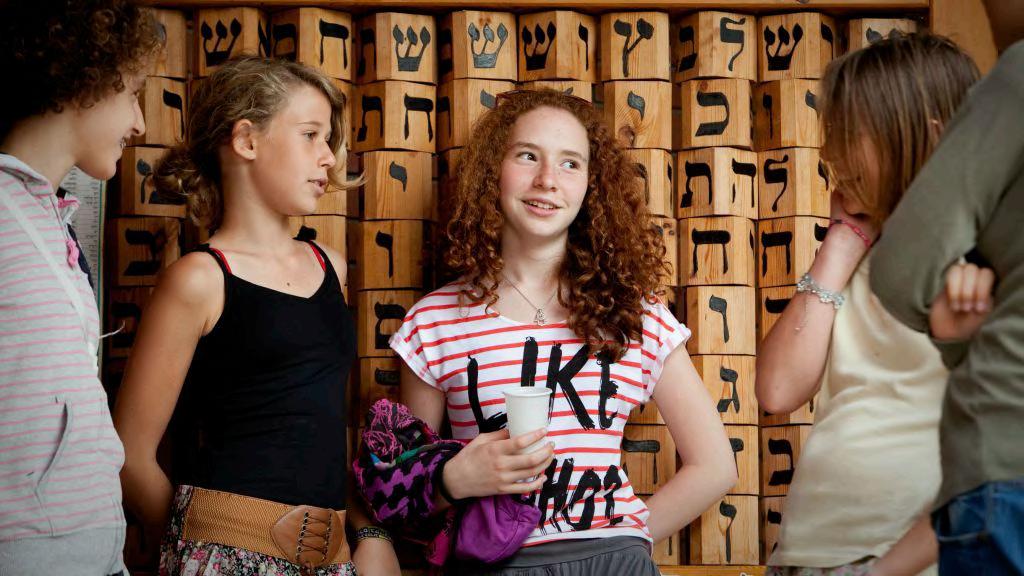
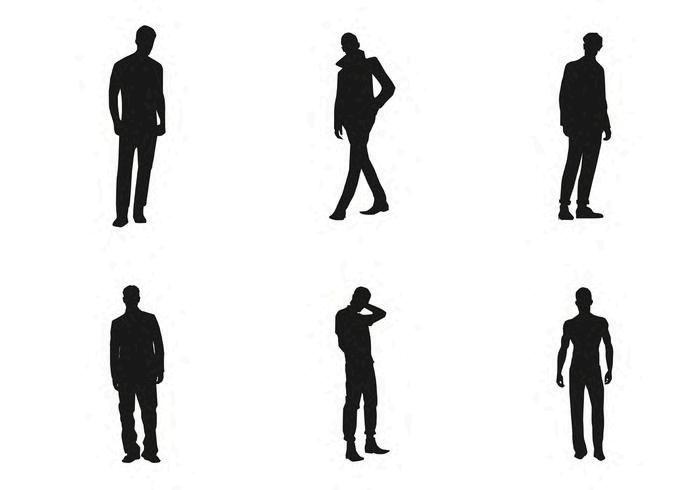







● The exhibition takes into account the heterogeneous cultural background of visitors, as well as the diversity of their languages, ages and interests.
● In the design, we sought to ensure that the cognitive and emotional contents complement each other in an ideal proportion and pace.

● The exhibition offers three possible tracks (50 minutes, 90 minutes, 180 minutes), thus creating a chance for visitors of all backgrounds alike to have the opportunity to identify with the content displayed.

Experience pulse
Emotional Experience
Cognitive Experience
~50 min experience track — Fast track, high-level learning — excluding deep-dive stations, in-depth interactive and film (~ average of 0.5 to 1 min spent per experience)


~90 min experience track — Regular track, sufficient depth of learning in each section (~ average of 1.5 to 2 min spent per experience)
~180 min experience track — Deep-dive track, with lingering time on deep-dive and interactive stations (~ average of 3 to 4 min spent per experience)
track:
Suggestions:
● Hungarian and English are not equally present in the exhibition
● The proportion of English text is sometimes less and smaller in size
● If the two languages cannot be displayed side by side, Hungarian is listed above English
● Existing pattern: Munet, Mexico City.

● The number of words should be limited as much as possible to avoid repeating the information:
- Up to 100 words in main presentations
- Up to 50 words to describe sub-stories

- Up to 25 words for English translations and up to 35 words when Hungarian translation is required

The on-site IT system provides an opportunity for visitors to find out about the museum through a downloadable application. The application can be used either on their own devices or on those provided by the museum. It also gives us the opportunity to expand or revise the content at a later date, if necessary.
* Later, other services can be added to the application, such as walks in Budapest's Jewish quarter, cemeteries, yellow star houses, or important sites of the German occupation.
Application Features :
● Supports and assists international visitors
● Helps the hearing impaired
● Allows for multi-length voice-based tours (e.g., 90 or 120 minute visit)
● Offers thematic tours for different age groups

● Works with multimedia tools, so it knows exactly where the visitor is going in the exhibition
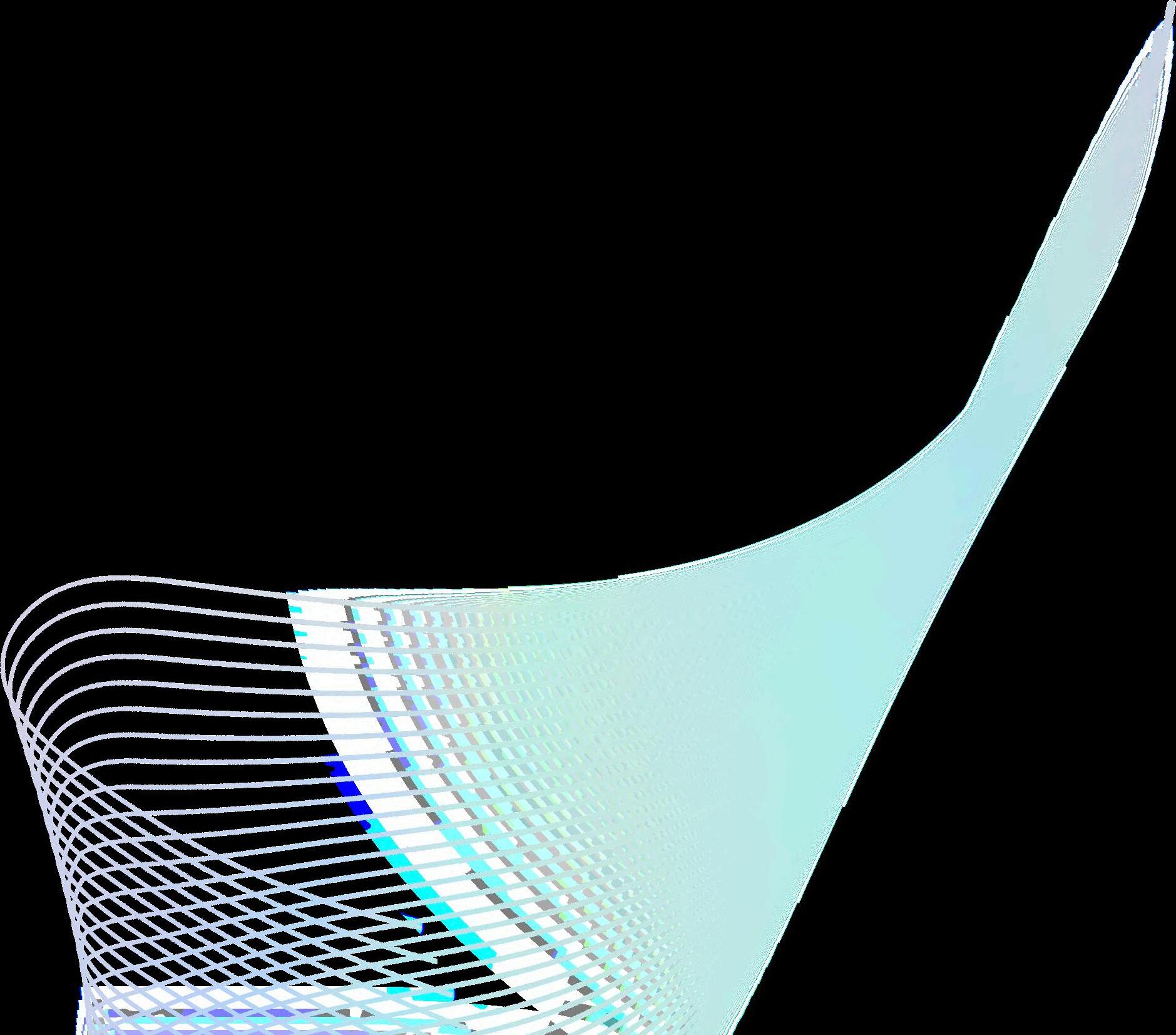

● Helps to understand visitor behavior (geo-location)
● Provides real-time translation for groups


Location aware wifi system

Charging Dock Headphones
Mobile App
Features :
- WiFi system installed throughout the museum
-Backend system allowing for tracking of visitor and device movement throughout the space
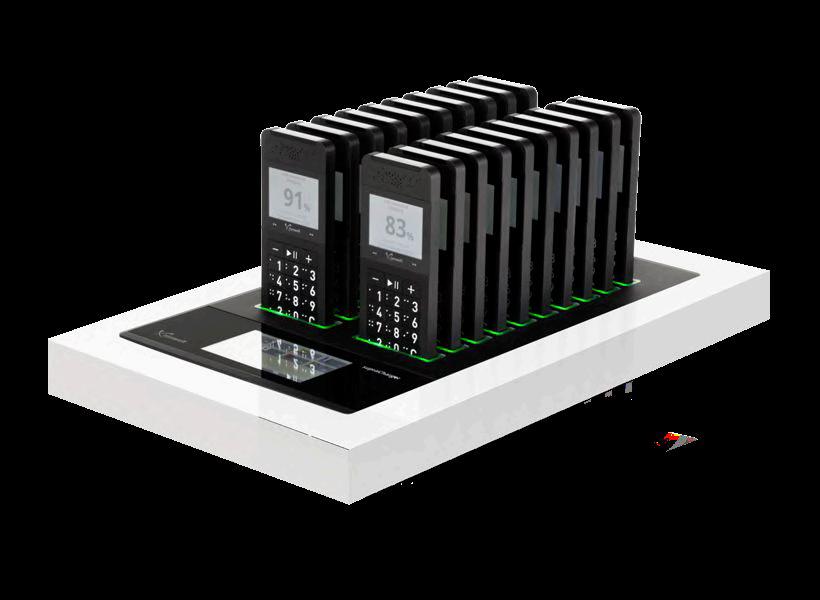
- Location-aware triggering of content
- Audio and media - multiple languages
- Adding a robust infrastructure network can help the museum extract data: visitor experience data, dwell time, engagement, and overall real-time experience feedback
Features :
Features
Features :
- Audio devices are stored and charged at the entrance, visitors leave their ID and take a device
- Headphones for audio tours provided by the museum come with wide-range audio quality and form factors

- Native app available for download on personal mobile devices or on the museum devices

- Content activation is triggered by visitors location
- Robust Wifi required
- Indoor & outdoor usage
- Physical storage space and charging time will need to be considered in the entry and exit visitor sequenceseparate from ticketing
- Due to usage intensity in museums, there is a high wear-and-tear rate, so planning long-term operations will need to factor in replacement devices
- Headphones could be an isolating factor in the visitor experience, (some hardware solutions are designed to address this issue)
- Content can be stored on devices or streamed from the cloud

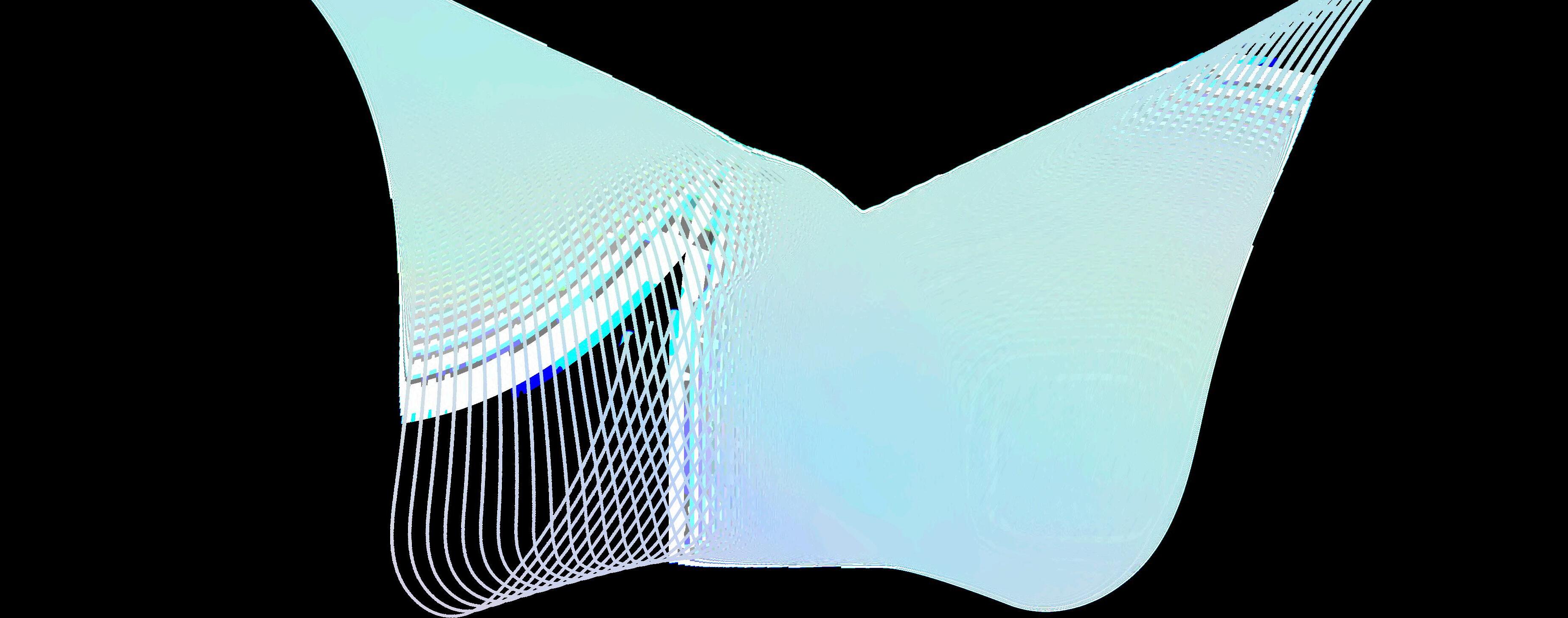



The central interior of the Museum is a nearly 300-meter-long piece of wooden furniture. This piece, symbolizing the tree of life, serves as the timeline of the exhibition and also guides the visitor through the past 150 years of the battered — but never completely broken — Hungarian Jewish community and Hungarian-Jewish coexistence. This symbol of Hungarian-Jewish coexistence also shows the uniqueness of this Jewish community in the Carpathian Basin compared to other Jewish communities in Eastern Europe.
The wooden timeline symbolizes the continuous presence of Jewish life in Hungary. The thread sometimes thickens, sometimes becomes thinner, but never breaks. The tree of life stretches all the way to the present day, emphasizing that the history of the Jewish community in Hungary is not only part of the country’s history but also a part of everyday life even today.
The history of the development of civil society is beautifully intertwined with the history of emancipation, social equality and Hungarian-speaking Jewish communities. While the consensus on coexistence has been questioned from time to time, it has never been completely eradicated. The “tree of life” is thus a metaphor in the museum design that is constantly changing and thus symbolizes this unique relationship in its appearance as well.
Visitors, particularly younger Hungarians, will get a sense of how integral Jews are to Hungary’s history. The timeline allows visitors to connect their personal history to the history of the Jews.
Jews have always been an integral part of Hungarian society. Their stories are diverse and vivid. This began many hundreds of years ago and continues to this day.
Emotional Cognitive
visit






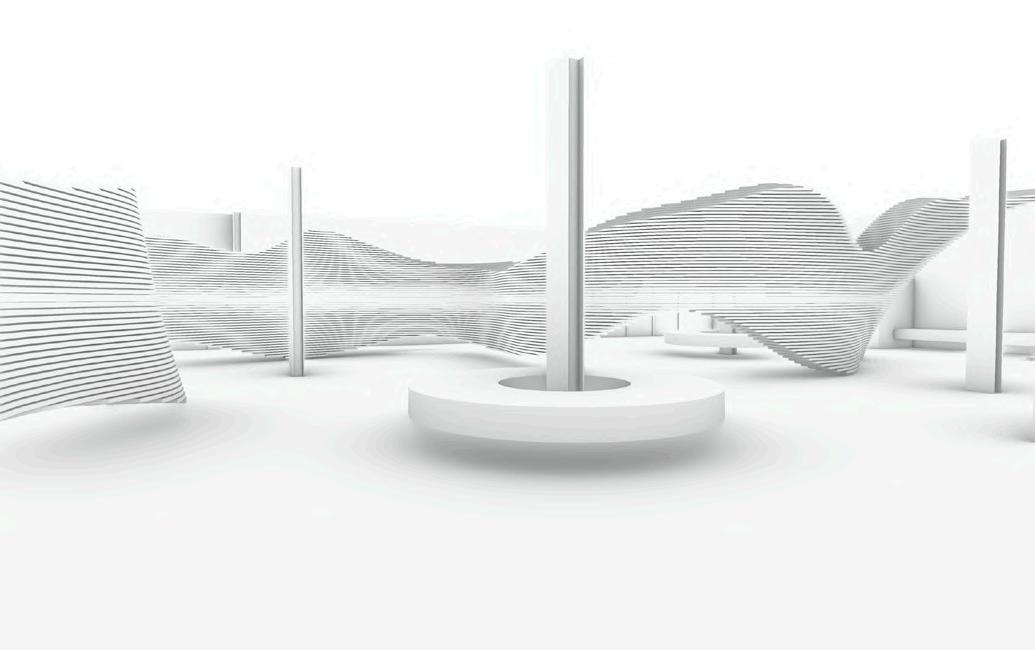

















Use the contrast of the current building materials (the coldness of the metal & architecture) against the warmness of the wood and rusted textures. Coal also brings the past of this old train station to life.

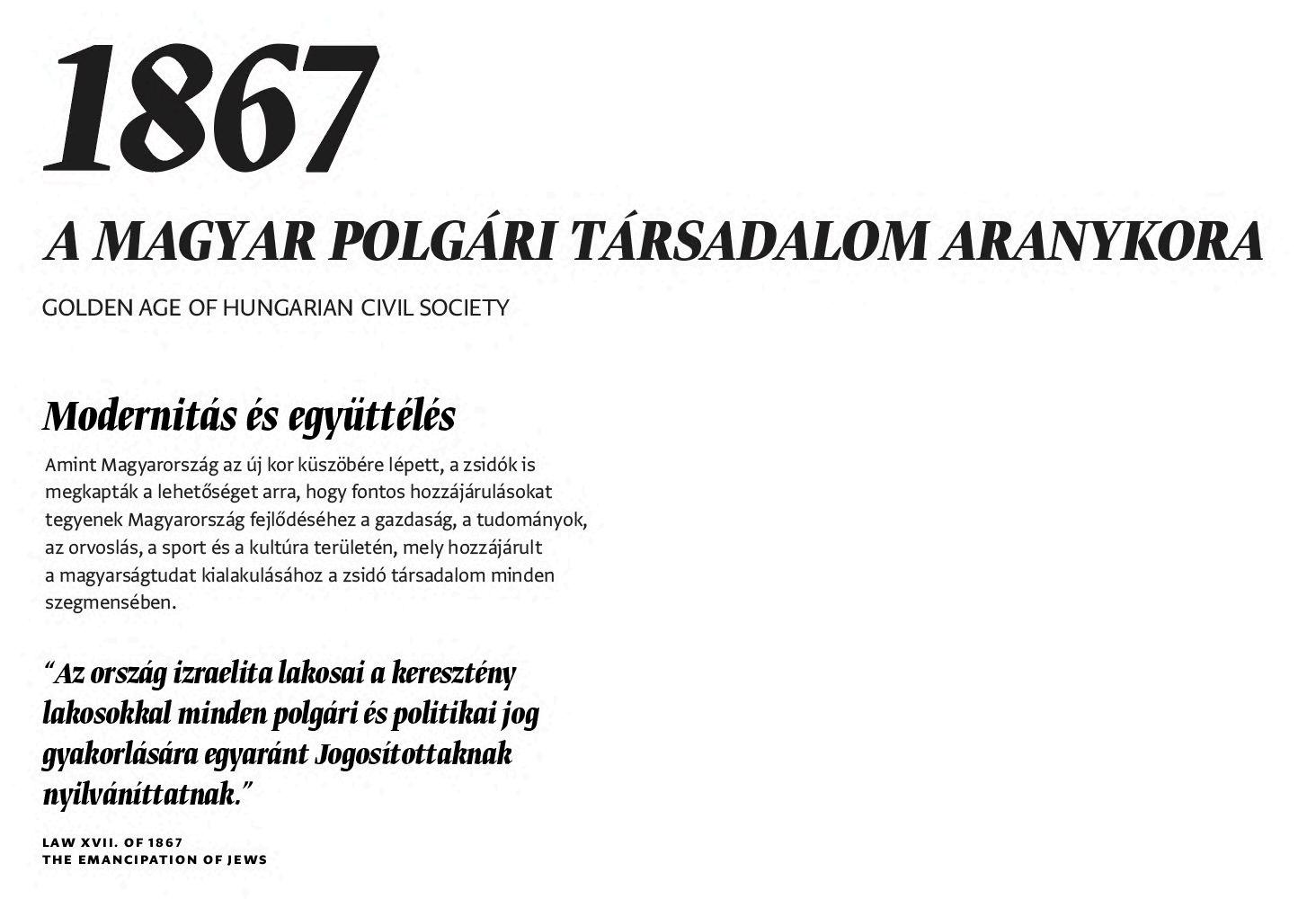









Coal is a chalky and earthy near-black or very dark gray. It is also a form of coal used in thermal power stations for generating electricity. It appears slightly softer on the page without the harsh contrast of black. Coal also works with colors associated with metals and minerals and looks great with silver, gold, rose gold, bronze, and brass. Used primarily for text and walls
White is a color that protects and encourages. It offers a sense of peace and tranquility, comfort and hope, and helps to relieve emotional disturbances. White is also the color of new beginnings and can additionally mean the end of one life and the beginning of another. Used primarily for text.
Grey is the color of balance and neutrality. It is a timeless and practical color that is often associated with loss and the past.

Silver is a precious metal and, like copper and gold often symbolizes riches and wealth. Silver is believed to be a mirror to the soul, helping us to see ourselves as others see us. Used for text emphasis and effect.

Red used as a spot color symbolizes the human flesh and blood. Used for stats and bold graphic treatment.


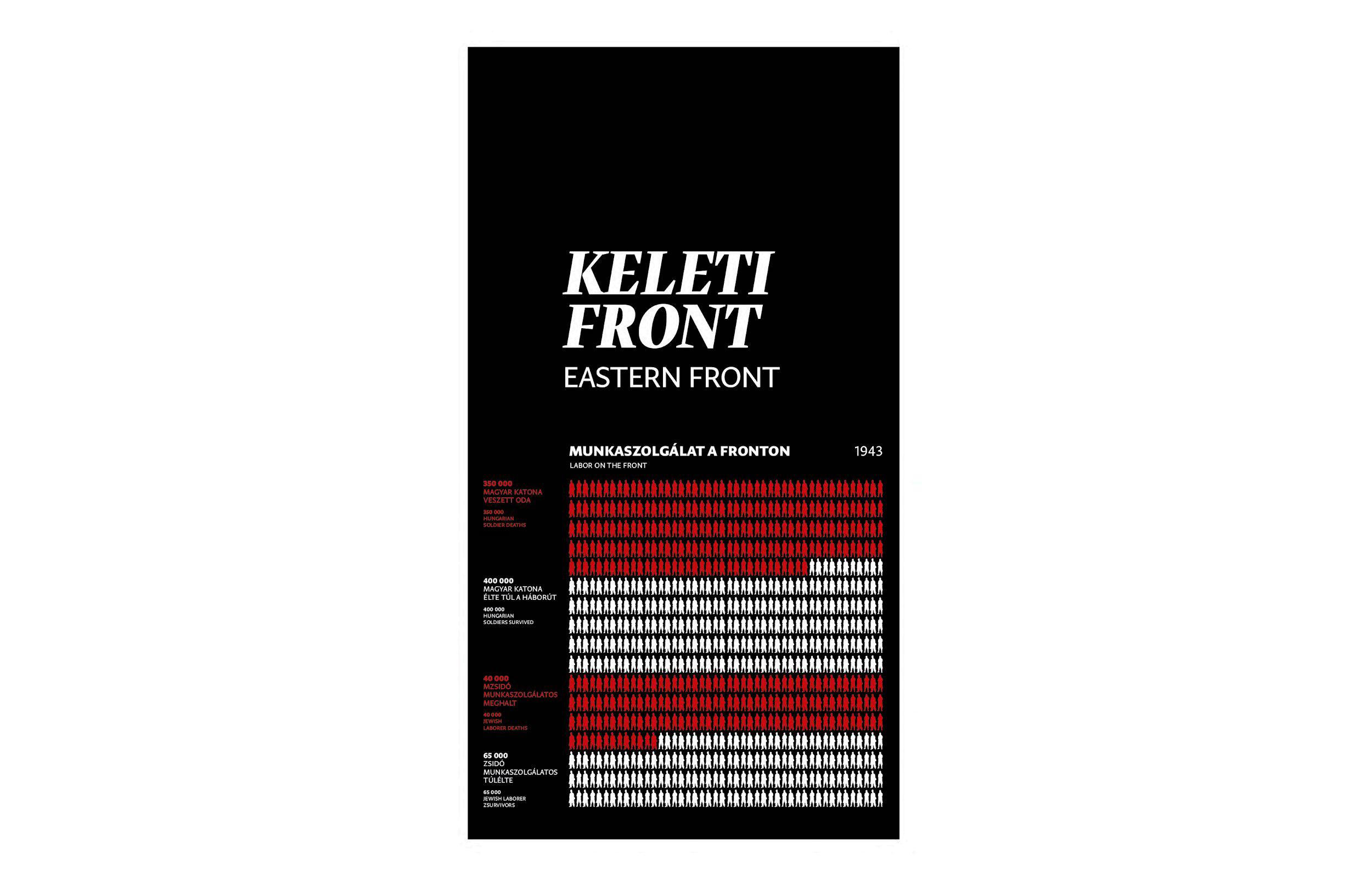
STUDY: 1867-1897
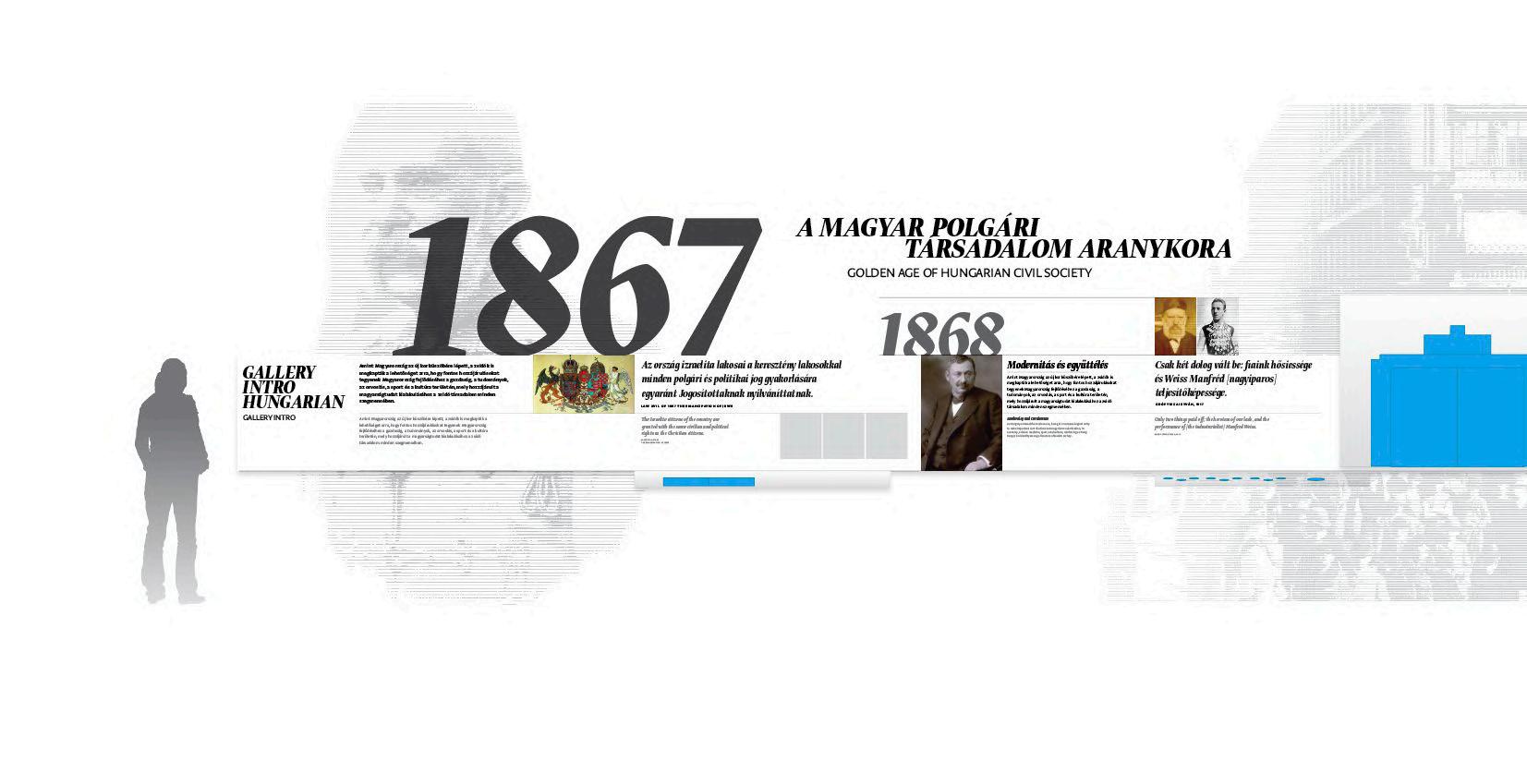




STUDY: 1867-1897 (DETAIL)
GRAPHIC ELEVATION (DETAIL)





Going along the historical timeline of the exhibition, the “thematic rooms” dedicated to each highlighted theme act as a cognitive or emotional “anchor experience” for the visitor.
The narration of the exhibition addresses the visitor in the language of the 21st century. The most modern museum technology solutions arouse the visitor's interest and make the exhibition an experience.

At the beginning of the trip, visitors can get to know short personal testimonies about Hungarian-Jewish identity and experience in Hungary. Visitors meet celebrities and everyday characters. In addition to projectors, visitors also encounter attention-grabbing data.
INTERPRETIVE TECHNIQUE

Two-way mirror clad Interactive screens are activated by visitors’ proximity, revealing full-scale short video portraits of members of the Jewish and Hungarian community today. The backside will reveal a quote augmenting the experience with a mix of content deliveries.
VISITOR TAKEAWAY
The Holocaust is a tragic story that still resonates today and learning from this story can help us shape our future.

DURATION 2 min. - for 50 min. visit 2 min. - for 90 min. visit 2 min. - for 180 min. visit

Emotional Cognitive
visitors/hours (50% utilization) 921,000 visitors/years (48 weeks)
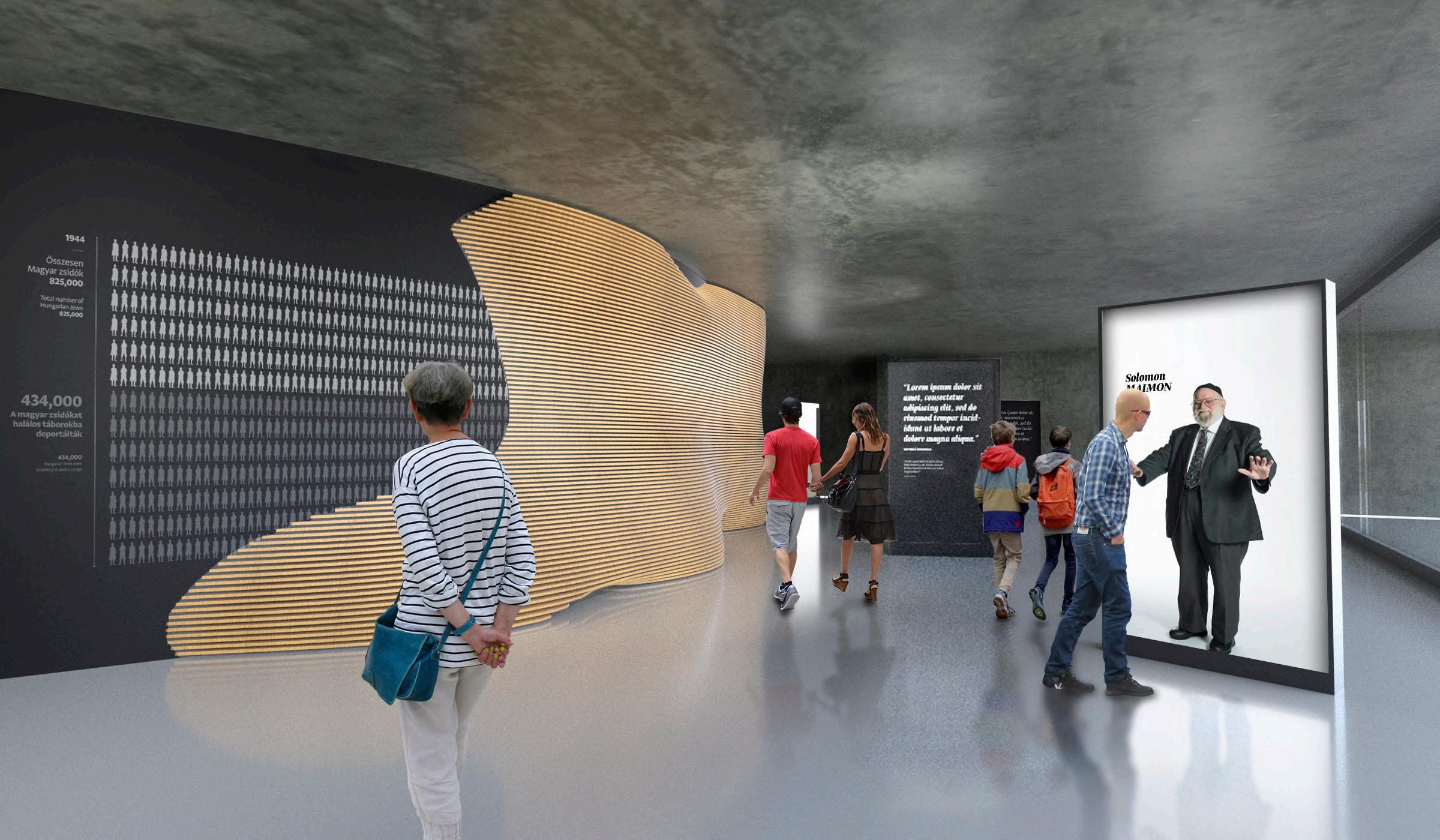




In idle mode, the screens look like mirrors so that visitors see a reflection of themselves.


When a visitor approaches the screen, one out of the 10 interviewees appears on screen and gives his/her perception of Hungary today. (~ 30 sec long max.)

Large visible quote from one of the interviewees. Can be printed or rear-illuminated and be revealed when a visitor walks by.
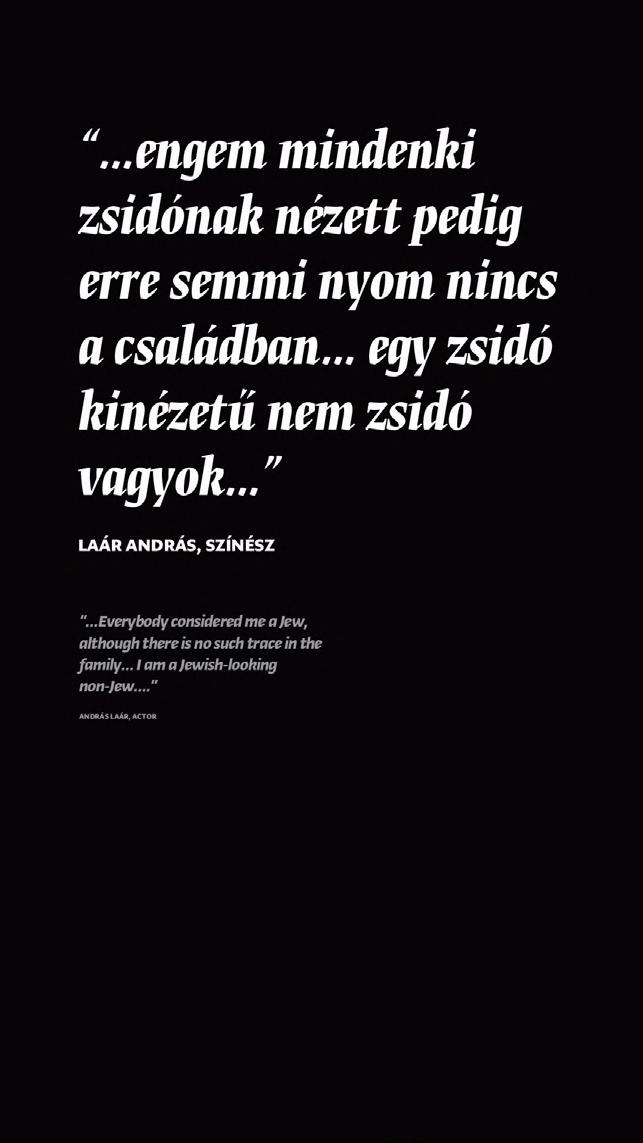

Visitors can get acquainted with the basics of general Jewish history from a short animated film, thus creating a context for understanding the history of modern Hungarian Jewry.
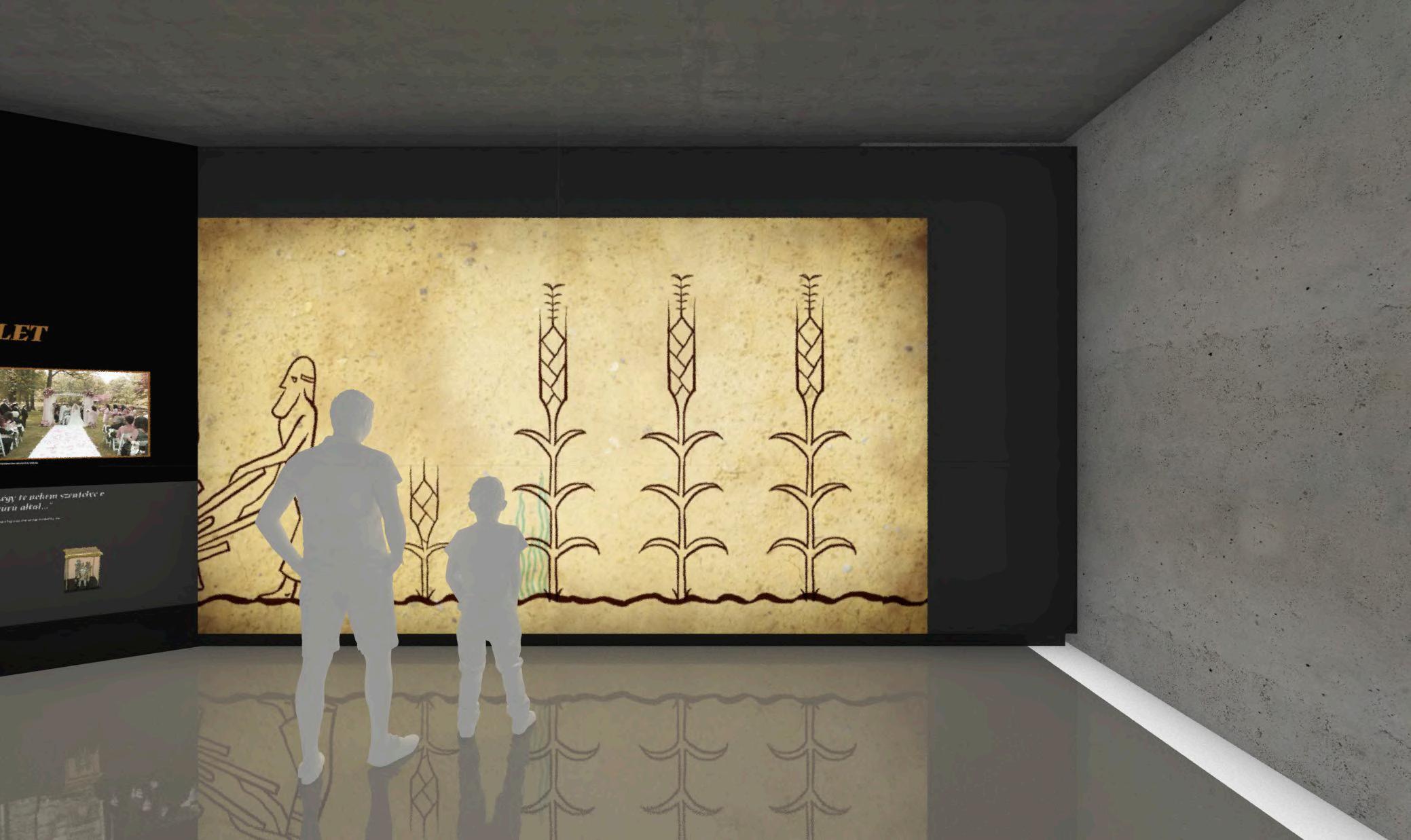

Short film with motion graphics. (No sound/captions)
VISITOR TAKEAWAY
Jewish existence has long historic roots and is based on core universal Jewish values that share many commonalities with Christian and Western values.
EMOTIONAL EXPERIENCE
DURATION .5 min. - for 50 min. visit .5 min. - for 90 min. visit .5 min. - for 180 min. visit
Emotional Cognitive

The basic tone of the exhibition is given by presenting basic human values that, as core values of Judeo-Christian civilization, familiarize the visitor with Jewish culture and provide a moral basis for understanding physical, spiritual, and mental resistance to tyranny.



Graphics & artifacts.

Judaism is not just a community that has suffered much, but a community that lives per the core values of Judeo-Christian civilization. The presence of Jews has deep historical roots, their culture is the basis of universal human values.
2.1b & 2.1a UNIVERSAL AND JEWISH VALUES
2.1b & 2.1a UNIVERSAL AND JEWISH VALUES







As visitors enter the gallery, they traverse life-size archival footage that captures urban and rural environments inhabited by Hungarian Jews. Sensing movement, the archive footage becomes colorful, bringing the scenes to life.

Interactive projections and sounds triggered by visitors movement through the exhibit.

EXPERIENCE Emotional Cognitive
DURATION 2 min. - for 50 min. visit 3 min. - for 90 min. visit 4 min. - for 180 min. visit 83

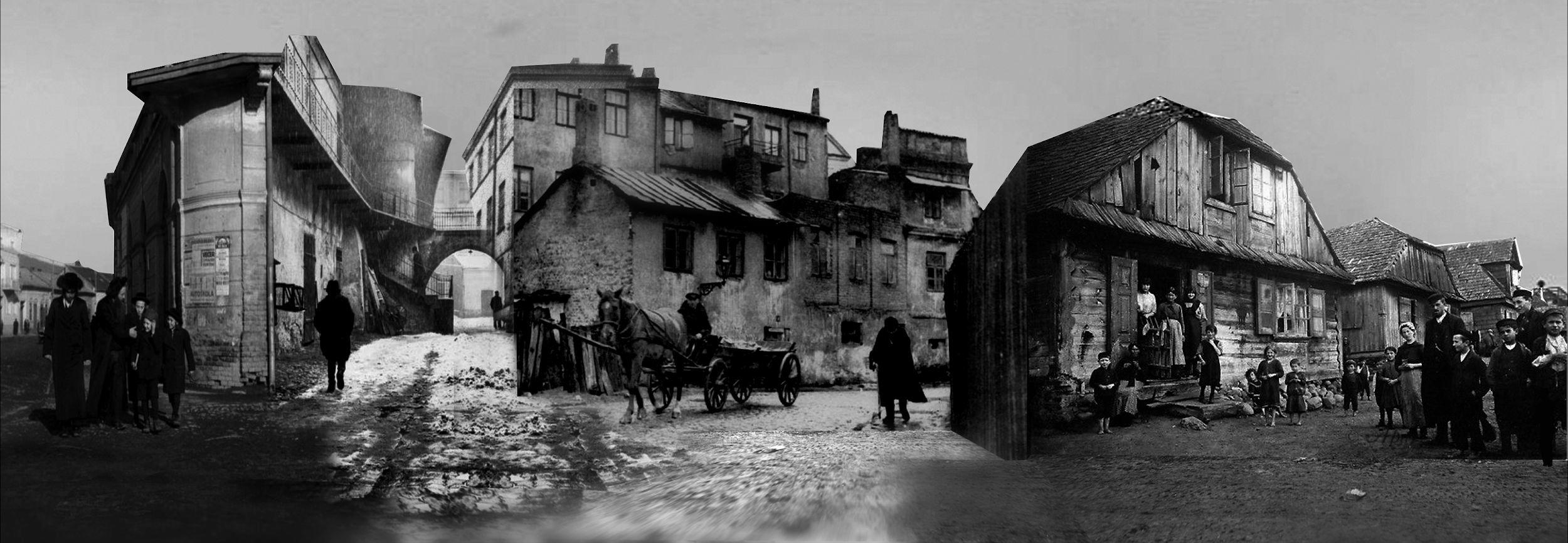






Rural life (1) — Single visitor standing by the projection.




As visitors approach the wall, a halo of color based on the visitors’ silhouette and movement brings to life archival pictures via motion and environmental sound.
Rural life (5) — Multiple visitors standing by the projection.
As visitors approach the wall, a halo of color based on the visitors’ silhouette and movement brings to life archival pictures via motion and environmental sound.
2.2 RURAL LIFE (Right Wall)
GOLDEN AGE OF CIVIL SOCIETY
ELEVATION
2.2 RURAL LIFE (Left Wall)
GOLDEN AGE OF CIVIL SOCIETY



ELEVATION
Rural life (10) — Multiple visitors standing by the projection.


As visitors approach the wall, a halo of color based on the visitors’ silhouette and movement brings to life archival pictures via motion and environmental sound.
Rural life Non-interactive mode (idle), no visitor
Rural life Single visitor standing by the projection
Rural life
Non-interactive mode (idle), no visitor
Rural life Single visitor standing by the projection
ELEVATION

Visitors are invited into 3 distinct spaces exploring the lives of 3 prominent Jewish individuals. The aim is to become aware of their notable contributions to Hungarian society in a diverse range of economic, cultural, and social fields.



Three-dimensional recreation of work/life environments, combining graphics, artifacts and props.
In the Golden Age, Jews in Hungary were allowed to participate in almost all aspects of life. Without legal limitations and with institutional approval, Hungarian Jews managed to excel, reaching high-level positions and achievements.

EMOTIONAL EXPERIENCE
Artifact case
3D recreations with props and graphics Intro graphic panel
Emotional Cognitive
DURATION
1 min. - for 50 min. visit


3 min. - for 90 min. visit
5 min. - for 180 min. visit




GOLDEN




This section presents the outbreak of World War I; the participation and contribution of Hungarian Jewry; the victims, and the special situation in which the Jews, for the first time as equal members of the Hungarian nation, took part in the defense of their country. This culmination of civil society was also a turning point in the fate of the integration of Hungarian and European Jewry.


Artifacts and graphics.




In the Golden Age, Jews in Hungary were allowed to participate in almost all aspects of life. Without legal limitations and with institutional approval, Hungarian Jews managed to excel, reaching high-level positions and achievements.
This section presents the consequences of the end of the First World War in Hungary, as defined by the Treaty of Trianon. Hungary lost two-thirds of its territory, and the Jewish community, stuck beyond the new borders, had to face both anti-Hungarian and anti-Jewish discrimination.

Animated floor map projection visualizing the shifting borders in Central Europe after WWI and the impact this had on Hungary’s population, culture, and economy.
EMOTIONAL EXPERIENCE
DURATION
.5 min. - for 50 min. visit 1 min. - for 90 min. visit 2 min. - for 180 min. visit


VISITOR TAKEAWAY
Emotional Cognitive
Jews were an integral part of Hungarian society, but the shrinking of Hungarian territories left many refugees under occupation facing new harsh realities as Hungarians and as Jews.
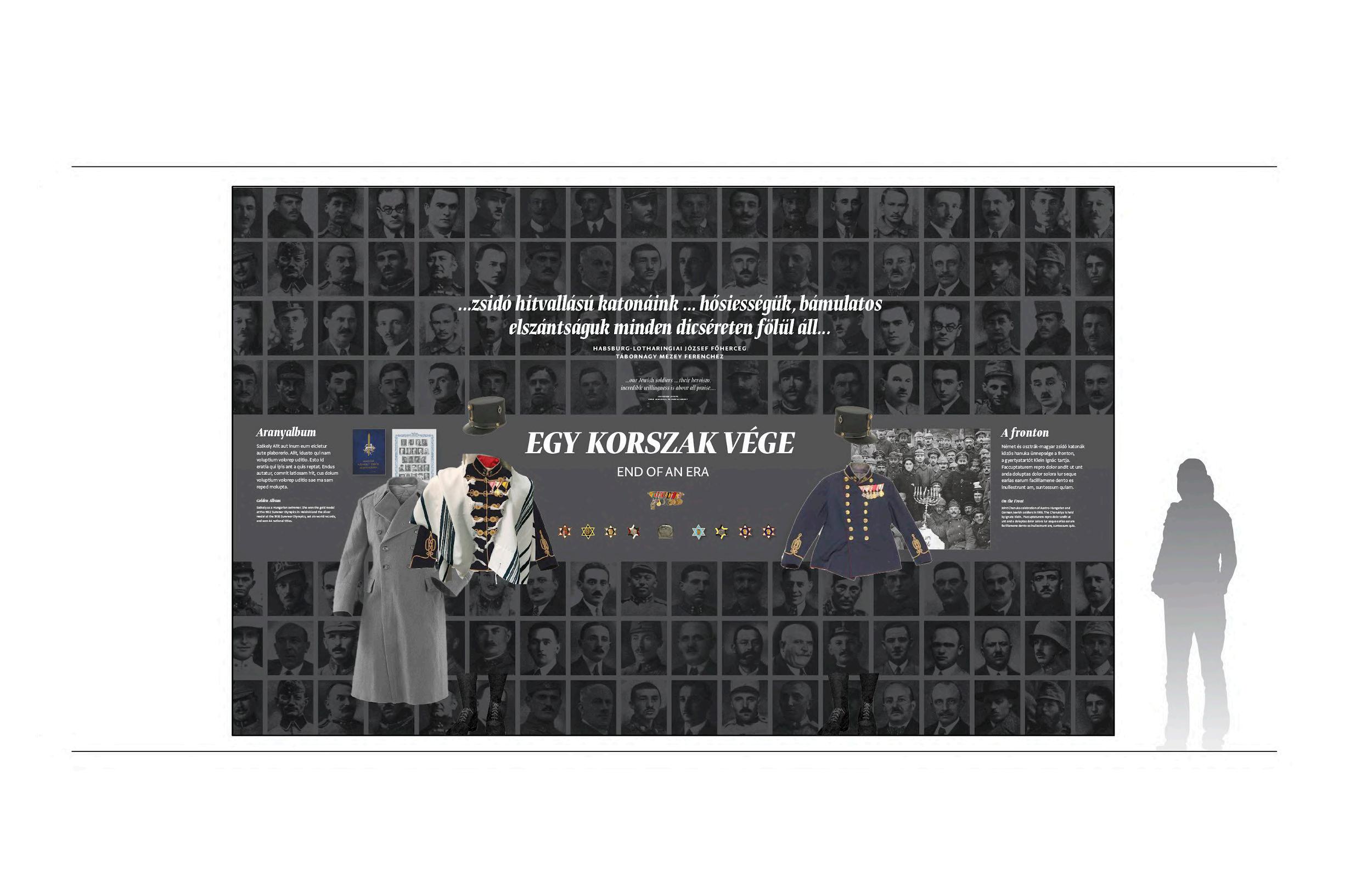






The period between the two World Wars brought an end to the balance of peace throughout Europe, as well as in Hungary. Part of the chaos that characterized the period was the economic crisis, the rise of the Soviet communist dictatorship, the rise to power of Hitler, and the spread of Nazi ideology. Hungary was on the brink of extinction. Meanwhile, antisemitism was intensifying and previous equalization processes were partially reversing.
Graphic panels are anchored from the ceiling and the floor. Dynamic lighting pulsates through the space augmenting the feeling of uneasiness and changing environment.
EMOTIONAL EXPERIENCE
DURATION
1 min. - for 50 min. visit

1 min. - for 90 min. visit
2 min. - for 180 min. visit

Emotional Cognitive
The uncertainties of the 20s and 30s form the basis of WWII and the Holocaust. The rise of antisemitism is spreading across Europe as well as in Hungary.


Rear-illuminated graphics suspended from ceiling
Rear-illuminated graphics anchored to gallery floor
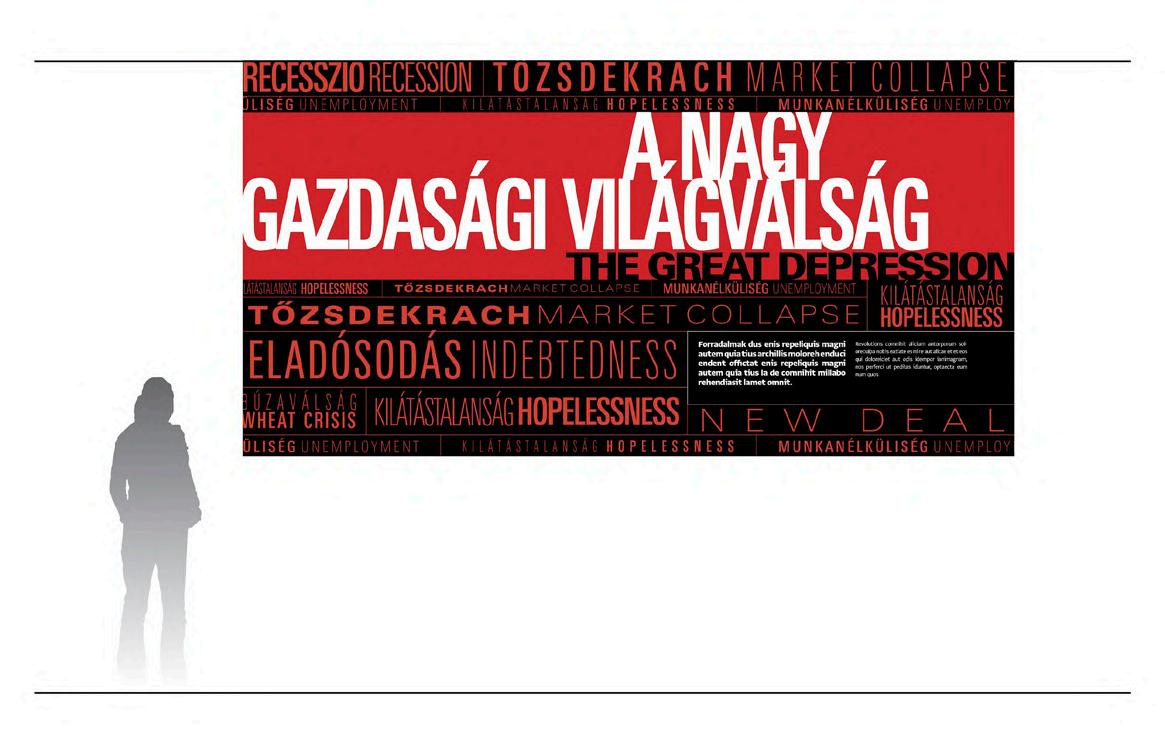




Rear-illuminated graphics suspended from ceiling




Visitors get an impression of the turbulent era between the World Wars. They will learn about the new European and Hungarian anti-Jewish laws, the Numerus Clausus, the European strengthening of fascism and Nazism, and the dictatorship of short-lived communism. They can learn facts about the Red Terror and much more.
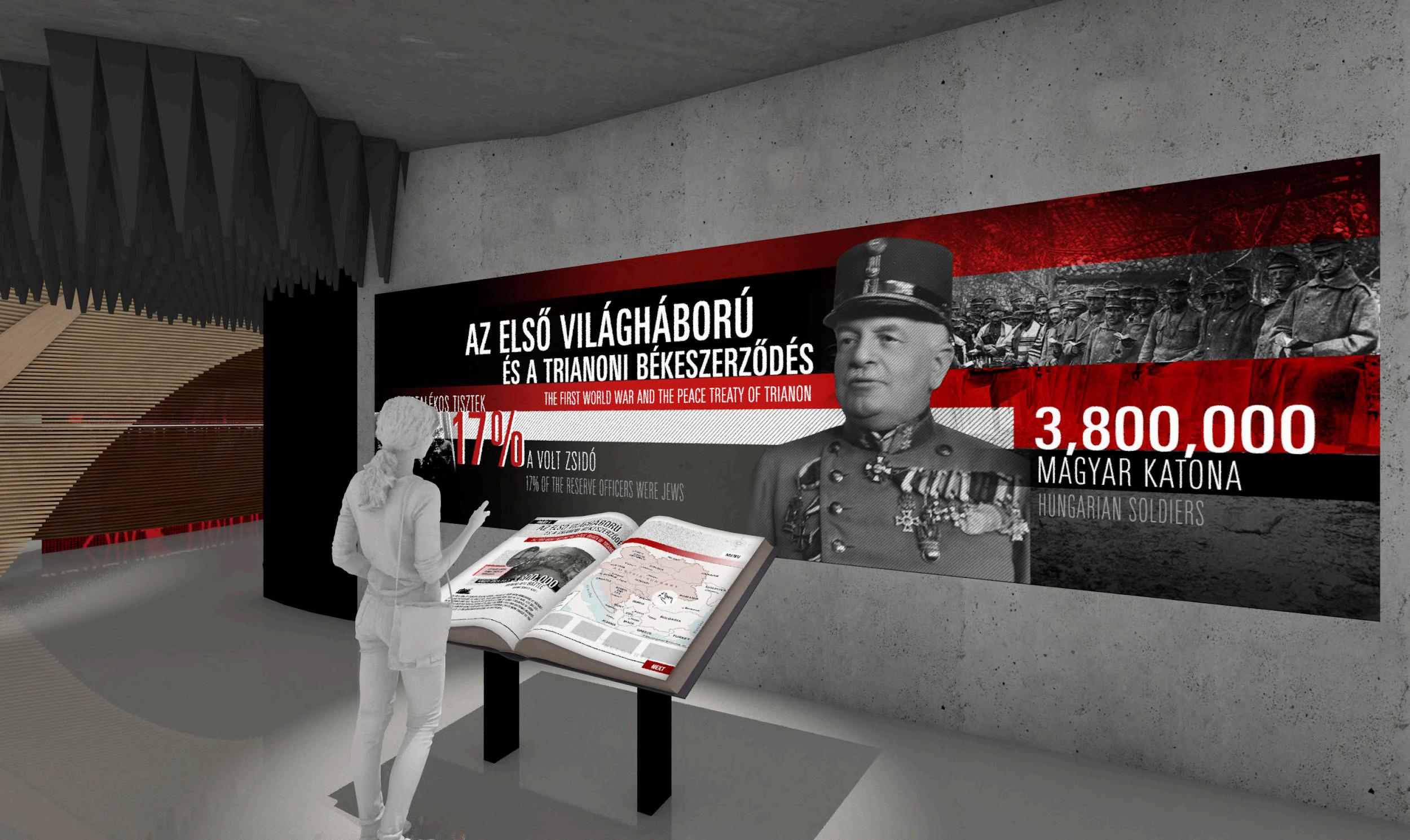
Interactive projection-mapping installation that utilizes a large open-book prop; as visitors flip the pages, new content is projected on the open-book video display.
An era of chaos and uncertainty has emerged in Europe with the rise of anti-Jewish sentiment, changing the status quo. The situation of the Jews in Hungary becomes more and more unpredictable.




A series of semi-open subspaces offer visitors a comfortable setting to explore more content via iPad stations, video stations, and books. VISITOR
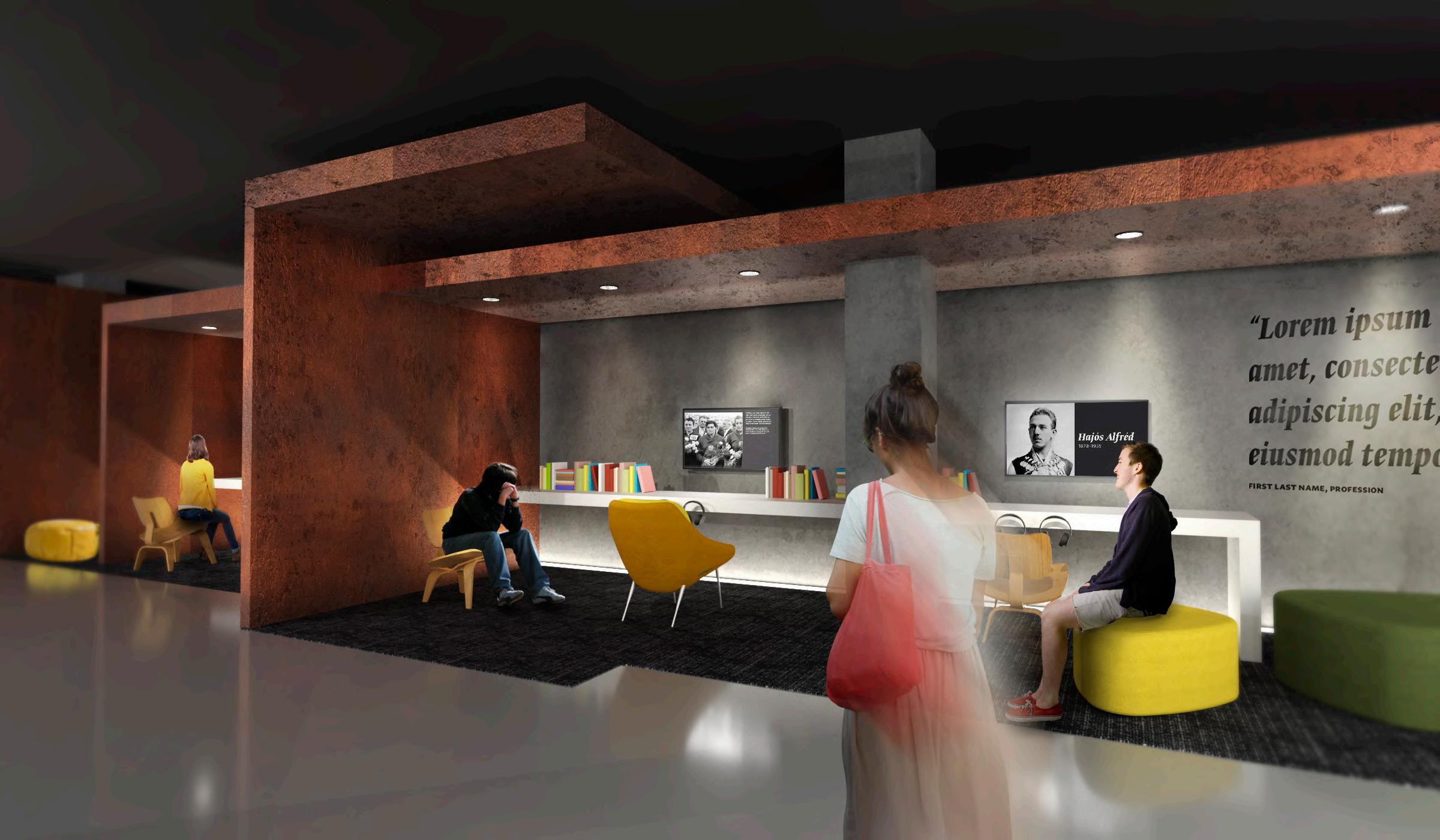

Visitors can gain a deeper understanding of what they have seen in a relaxed environment.

Content Stations provide additional information for visitors wanting to know more about the pre-WWII period.
At the time of the outbreak of World War II, Hungary was still in a period of “silence before the storm.” The gallery is dreadfully quiet as visitors immerse themselves in the visuals provided by the dynamic “hologram” graphic panels.
INTERPRETIVE TECHNIQUE
Acoustic noise reduction and lenticular graphics on two circular wall surfaces.



VISITOR TAKEAWAY
Only a few saw what was about to come, when dark clouds started to gather.
EMOTIONAL EXPERIENCE
DURATION
1 min. - for 50 min. visit 1 min. - for 90 min. visit 1 min. - for 180 min. visit
Emotional Cognitive

4.1 OUTBREAK OF WWII, EUROPEAN CONTEXT
4.1 OUTBREAK OF WWII, EUROPEAN CONTEXT





4.1 OUTBREAK OF WWII, EUROPEAN CONTEXT
4.1 OUTBREAK OF WWII, EUROPEAN CONTEXT







This section presents the unique history of the Hungarian labor battalions, highlighting the brutality while emphasizing the diversity of different eras and statuses of the labor service. Labor service meant discrimination, exclusion, humiliation, or even protection from deportation at certain times of the war.
Combination of archival footage projection, artifacts, personal stories/testimonies.

Forced to support the war effort, not all the Jews forced into the segregated battalion perished in the madness of the war, but they suffered from deteriorating conditions on the war front, discrimination by the army, and some abuse by Hungarian commanders.
EMOTIONAL EXPERIENCE
DURATION
1 min. - for 50 min. Visit 2 min. - for 90 min. Visit 3 min. - for 180 min. Visit


Emotional Cognitive
Bright display/ no visitor reflection / add a bit of glow No



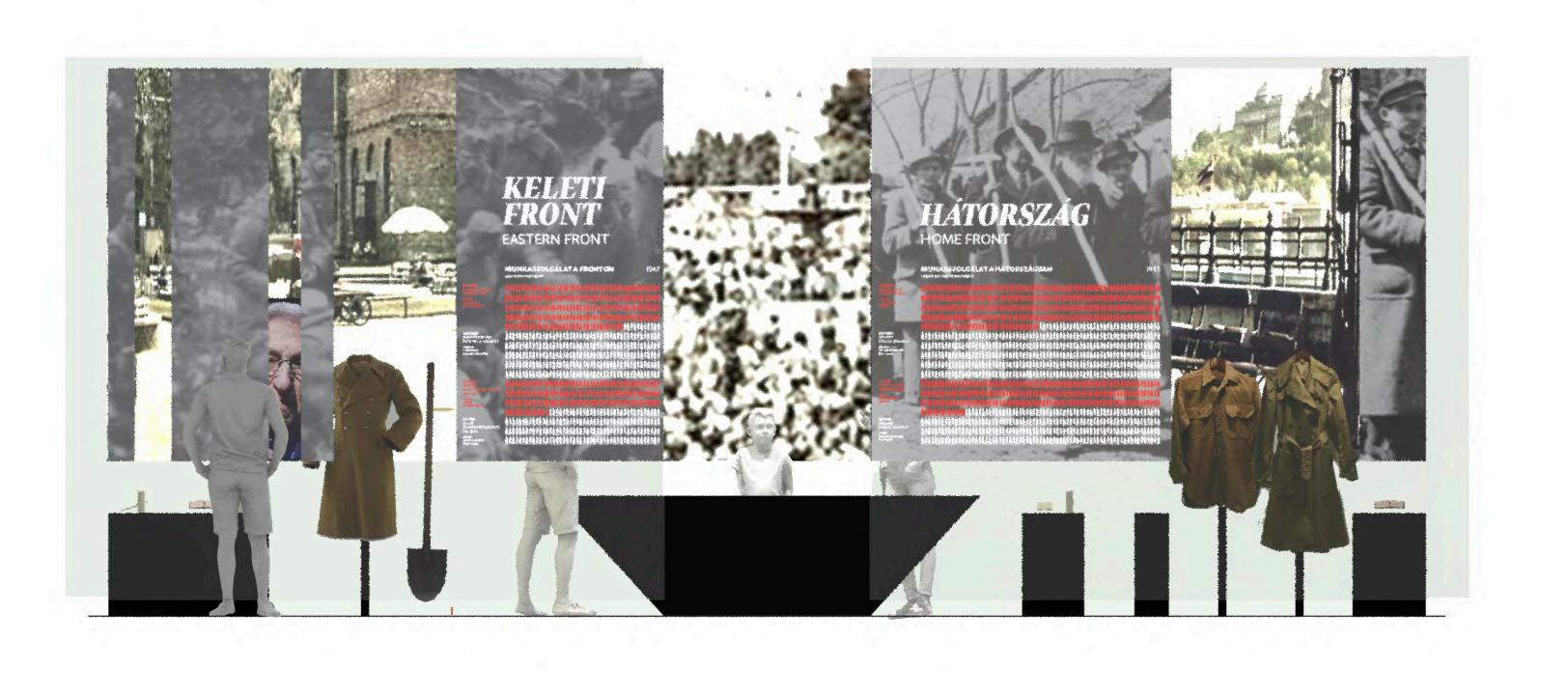


The area surrounded by showcases of the war front depicts the relative calm of everyday civilian life during the first years of the war. This placement symbolically emphasizes the ambivalent period of the first few years of the war, in which the experience of the front and labor service and the surrounding countries stood in stark contrast to the everyday life of the Hungarian civilian.

Combination of archival footage depicting normal civilian life in Hungary, large-scale environmental graphics, along with artifact diaries
Despite legal discrimination, everyday civilian life remained relatively safe for Hungarian Jews, in sharp contrast to the conditions of the labor front and the reality of other German-occupied European countries in which systematic genocide had already begun.
EMOTIONAL EXPERIENCE
DURATION
min. - for 50 min. Visit 2 min. - for 90 min. Visit 3 min. - for 180 min. Visit

Emotional Cognitive

OUTSIDE LIFE:
PRECARIOUS NORMALCY ENVIRONMENTAL GRAPHICS
This special section brings March 19, 1944, to the attention of the visitor as a turning point in the fate of Hungary and Hungarian Jewry. In the days following the German occupation and the inauguration of the new Hungarian government, the situation of Hungarian Jewry became critical at an unpredictable speed.
Anamorphic, oversized graphics draw visitors into the exhibit alcove. A combination of archival photos, graphic panels and potential artifacts provide context for how quickly the story will unfold in the next galleries.

INSIDE CIVILIAN LIFE: PERSONAL STORIES
As visitors approach the table, the diary is brought to life with the projection of contextual imagery and copy surrounding the object.
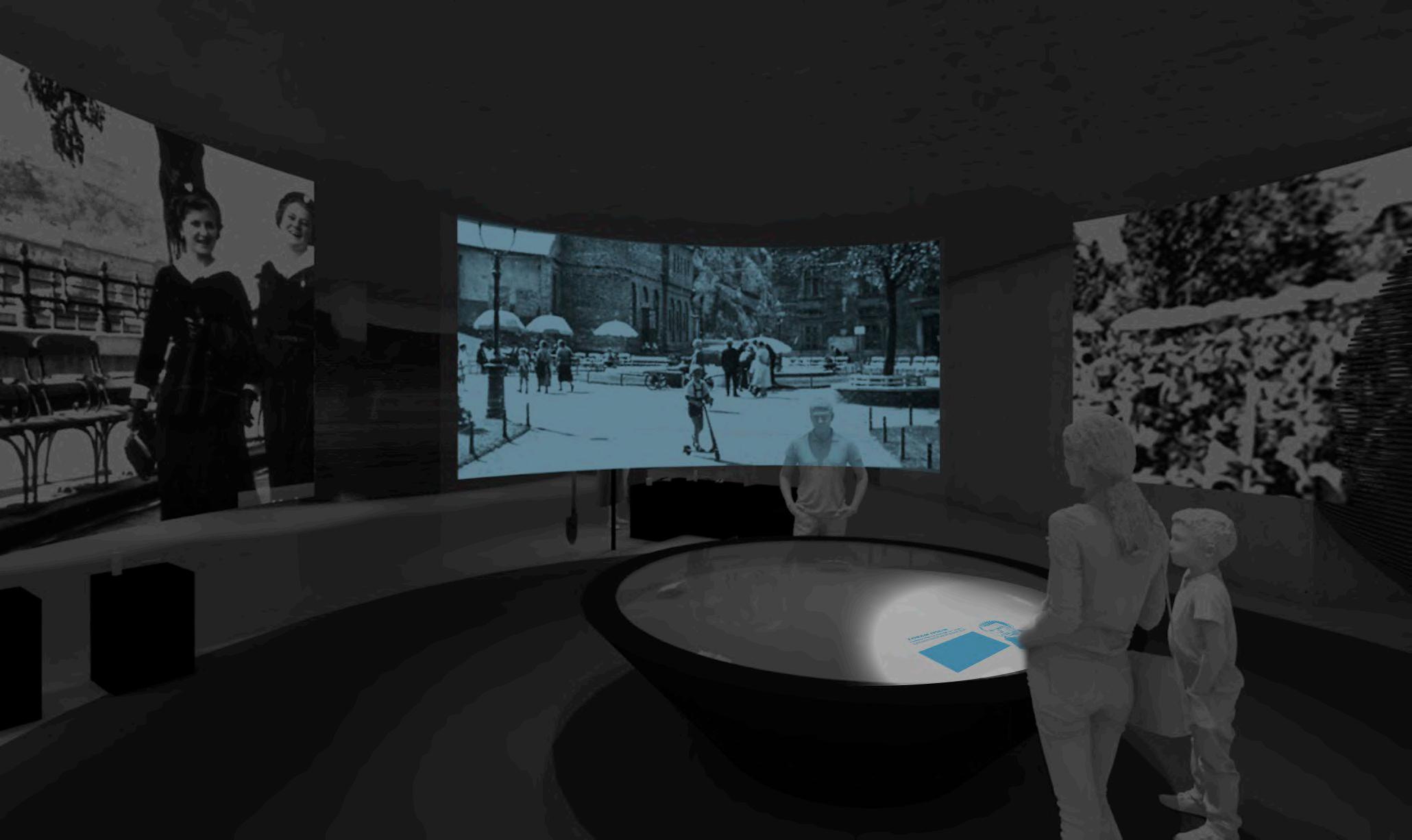
Proximity sensor
The German occupation of 1944 marked a turning point for Hungarian Jews. Hungary was no longer a safe haven. With the cooperation of the Hungarian administration, the deportation of Hungarian Jews and the preparation of the necessary environment began.
Anamorphic

EMOTIONAL EXPERIENCE
DURATION
.5 min. - for 50 min. visit

1 min. - for 90 min. visit
1 min. - for 180 min. visit
Emotional Cognitive




The terrible reality of the Final Solution became tangible in Hungary - the rapid collection and deportation from rural communities to the death camps took place within weeks. In preparation for this, rural Jewry was systematically forced into urban ghettos, from where, after 2-3 weeks, they were pushed into cattle wagons to death camps.

An animated map floor projection presents the timeline and locations of the fast deportation process to Auschwitz and other death camps. A section of ghetto wall provides tangible evidence of this tragic story.
A seemingly stable situation transforms with astonishing speed into one of the most extreme mass murder in human history.
Cognitive
DURATION min. - for 50 min. visit 2 min. - for 90 min. visit 3 min. - for 180 min. visit
4.5 CHANGE OF LIVING CONDITIONS & THE GHETTOS
4.5 CHANGE OF LIVING CONDITIONS & THE GHETTOS
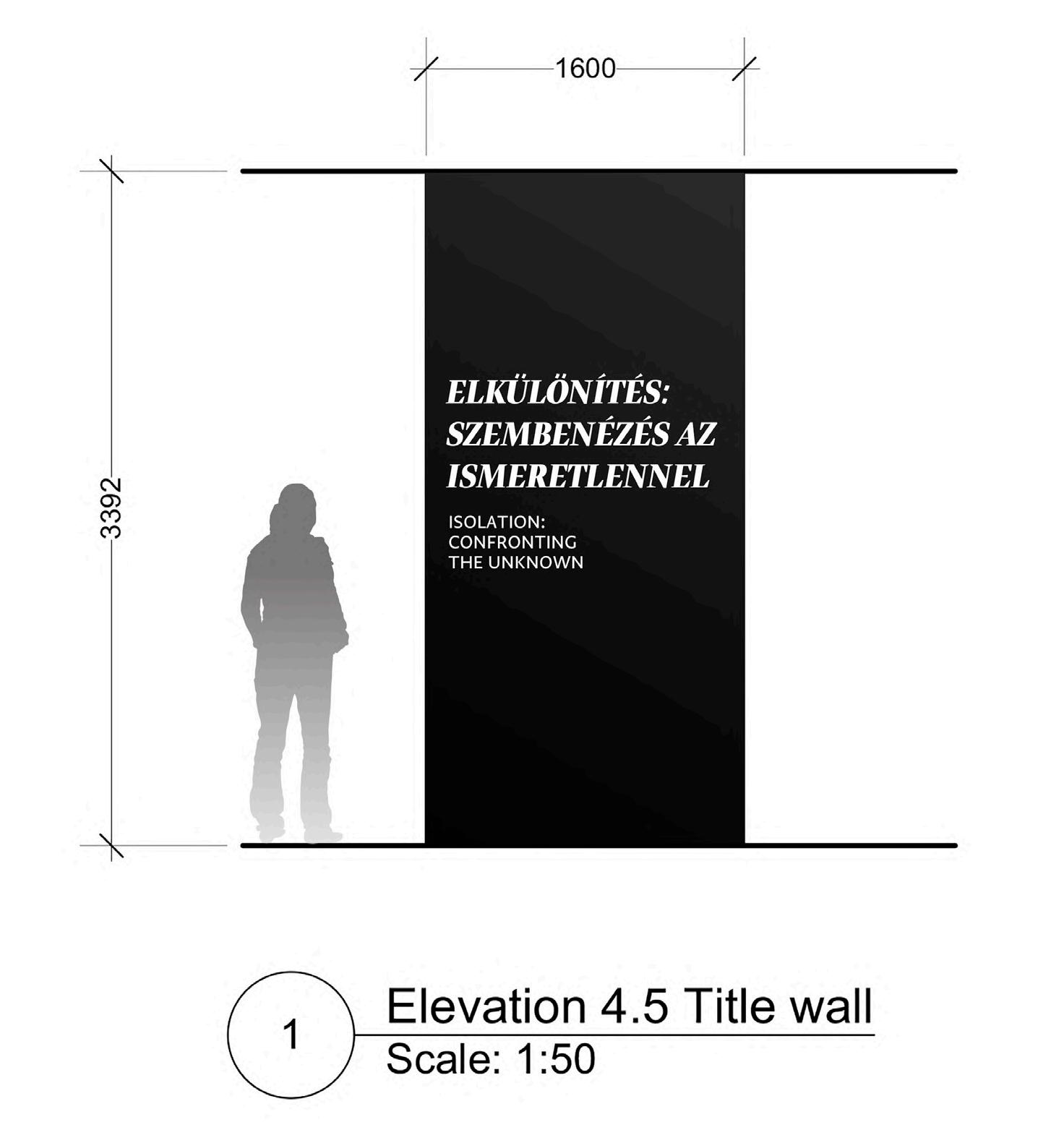




Full map of Hungary shows ghetto zones with dates - animation reinforces fast-paced progression over time.

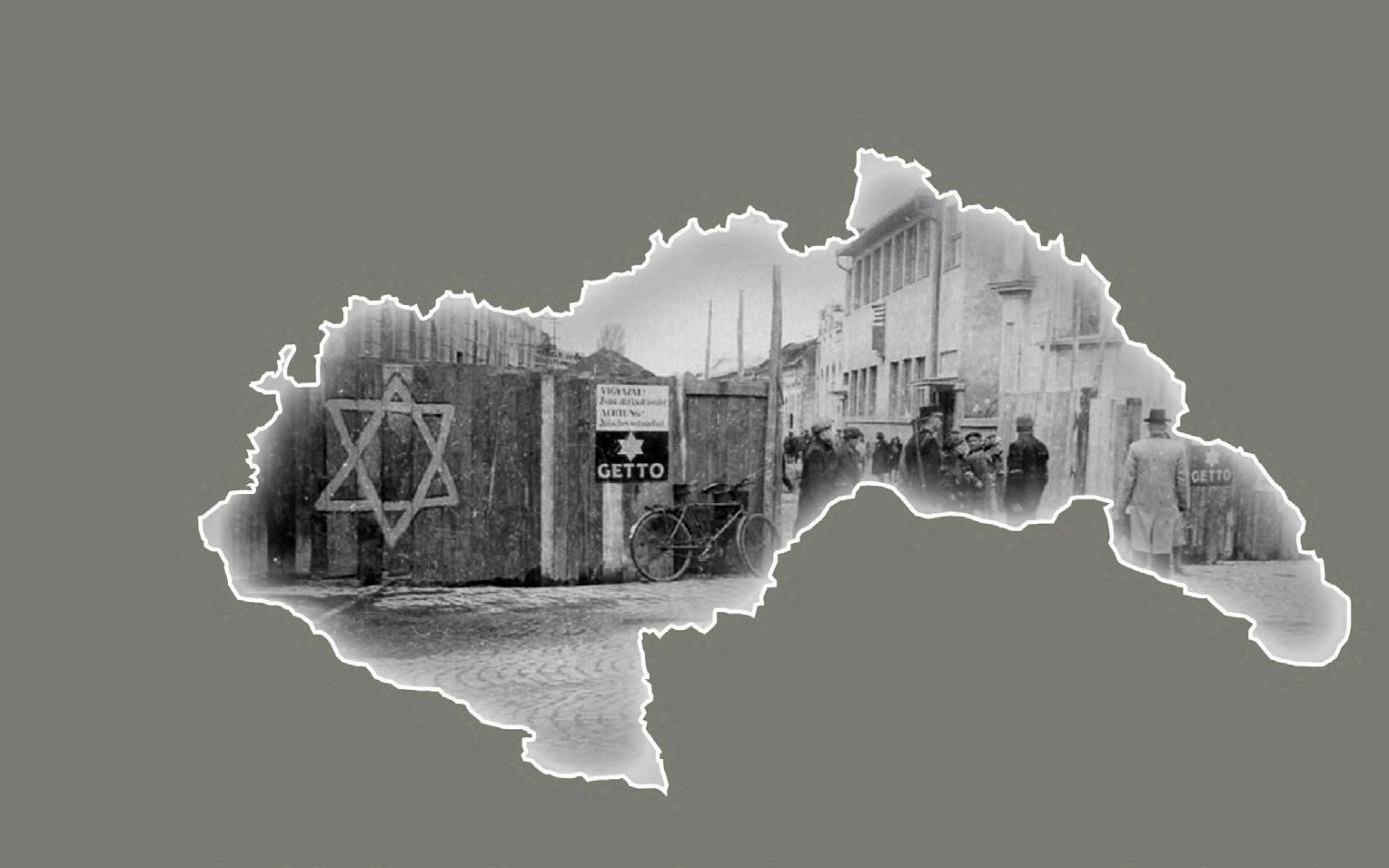


District Zooms into one city (e.g, Debrecen) to show a limited area compared to their prior living conditions.



Moving imagery reinforces the feeling and human connection to the event and helps in giving a sense of time and place.
If there are some interesting data to show, e.g., change in behavior during that time. Example here shows mobility change/spatial history. Link here


The transportation of Jews to death camps was organized with astonishing efficiency and speed. Within a few weeks, more than
437,000 Jews were sent to Auschwitz and other concentration camps.
Artifact case with graphics

The size of a transport rail car is simulated at full scale, giving visitors an opportunity to understand, viscerally, the inhumane transport conditions to the camps. Artifacts, graphics and soundscape.

Hungarian Jews felt particularly betrayed, when realizing that the ruling government left them exposed to the Nazi extermination machine.
EMOTIONAL EXPERIENCE
DURATION
1 min. - for 50 min. visit
2 min. - for 90 min. visit
3 min. - for 180 min. visit
Emotional Cognitive



The Auschwitz-Birkenau model, elaborated in unique detail, introduces the visitor to the elusive dimensions and systematic nature of the world’s largest death camp. The animation projected on the model shows the arrival of the Munkács transport in May 1944, which was documented in the so-called Auschwitz Album by two SS officers.

Model with video projection overlay. Vertical video projection.
VISITOR TAKEAWAY
The killing was systematic and took on industrial proportions. The victims, on the other hand, were ordinary people.
EMOTIONAL EXPERIENCE
DURATION
1 min. - for 50 min. visit 1 min. - for 90 min. visit 1 min. - for 180 min. visit

Emotional Cognitive

Projection on screen above
A selection of images from the Auschwitz Album cycle through n relation to what is projected on the model.





Projection on model

A brief description supported by stats and simple graphic animation explain the process of industrialized murder.


Large-scale reproductions of photographs from the Auschwitz Album give visitors a strong human context for the story in visual format.

INTERPRETIVE TECHNIQUE
Architecture-scale graphic panels.

VISITOR TAKEAWAY
The range of people shown in the photographs emphasizes the absolute destructive aim of the Final Solution. Entire families and communities were wiped out.
EMOTIONAL EXPERIENCE
DURATION .5 min. - for 50 min. visit .5 min. - for 90 min. visit .5 min. - for 180 min. visit

Emotional Cognitive

Through personal stories, visitors can learn about the everyday circumstances and survival tactics of prisoners who were not immediately murdered, with a particular emphasis on the human and religious values that gave many hope and emotional support.


Reproduction objects, graphics and video interviews are revealed as visitors approach an opacity-changing glass partition.
The surviving prisoners had to endure unimaginable physical and mental ordeals to survive. For many, human values brought from home, family and friendships, as well as religious beliefs, could provide emotional support and hope.
Opacity-changing glass
(4 units) 147
Video interview
EMOTIONAL EXPERIENCE
DURATION
min. - for 50 min. visit 2 min. - for 90 min. visit 2 min. - for 180 min. visit

Emotional Cognitive

Inactive mode
From a distance, the case is not visible and only shows a question printed in vinyl letters over frosted glass.


Immersive video presentation
In the 360-degree screening room, visitors will learn about the staggering living conditions in death camps, human destinies and tragedies, and the heroic desire to survive, along with the values that motivate this, through a 5-7-minute film.
INTERPRETIVE TECHNIQUE
Linear film presentation with sound
Seating area with swivel chairs
VISITOR TAKEAWAY
Active mode
As soon as a visitor approaches the case, the frosted glass becomes clear to reveal an object and a survivor video testimony. (E.g., a piece of bread to show how little food prisoners were given.)
Wounds from such a traumatic event are lifelong. This story is still relevant today; we can and should learn from it.
EMOTIONAL EXPERIENCE
DURATION
0 min. - for 50 min. visit
2 min. - for 90 min. visit

6 min. - for 180 min. visit




Emotional Cognitive


4.11 3D AUDITORIUM: THE FINAL SOLUTION
4.11 3D AUDITORIUM: THE FINAL SOLUTION


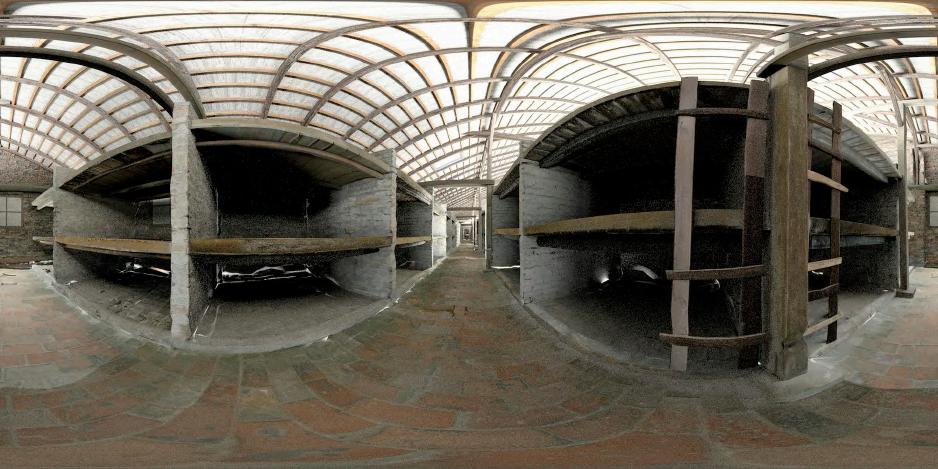




THE HOLOCAUST

The large-scale media map depicting Budapest shows the location of the so-called yellow star houses, sheltered houses, and the Great Ghetto, as well as other important sites related to the history of the Jews of Budapest. Visitors can activate a separate information interface and combine data to better understand the story.
Interaction rail with (5) stations Video rear projection Budapest Ghetto posters
Interactive media map with 5 distinct stations. Visitors activate the map via a physical dial located on a rail located in front of the video projection surface.

DURATION
1 min. - for 50 min. visit 2 min. - for 90 min. visit 5 min. - for 180 min. visit

The fate of the Jews of Budapest was not the same as that of their compatriots in the countryside. After the deportations were stopped, and after the Arrow Cross took power, they were again in danger of being exterminated.
Emotional Cognitive
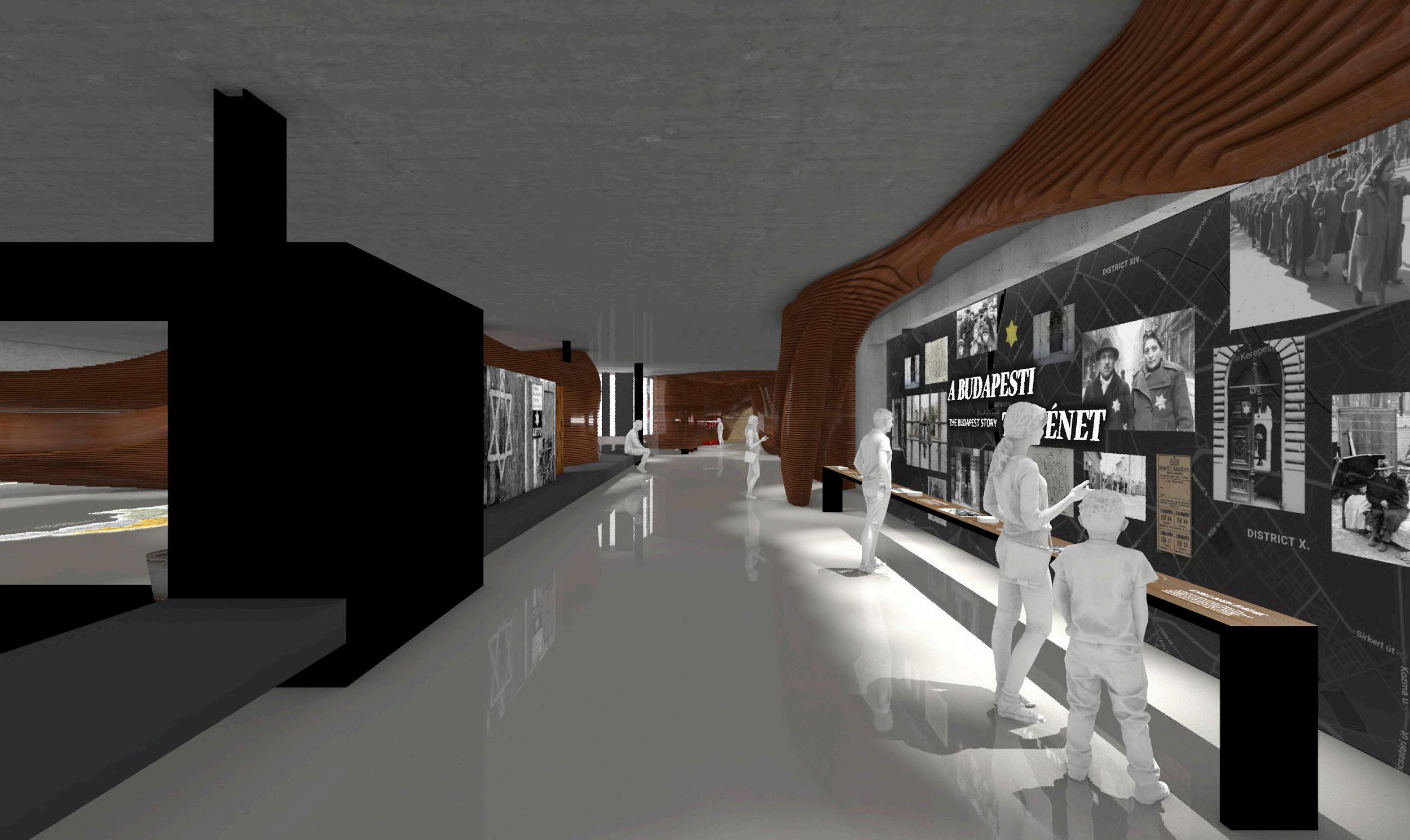



Contextual imagery
Text overview

Prioritized entry, although users can explore all filters.



Projection (1 station)
PHYSICAL DIAL (controller)
Visitors can navigate through content by turning the dial to advance stories, zoom in and out of maps, and go back and forth in time.
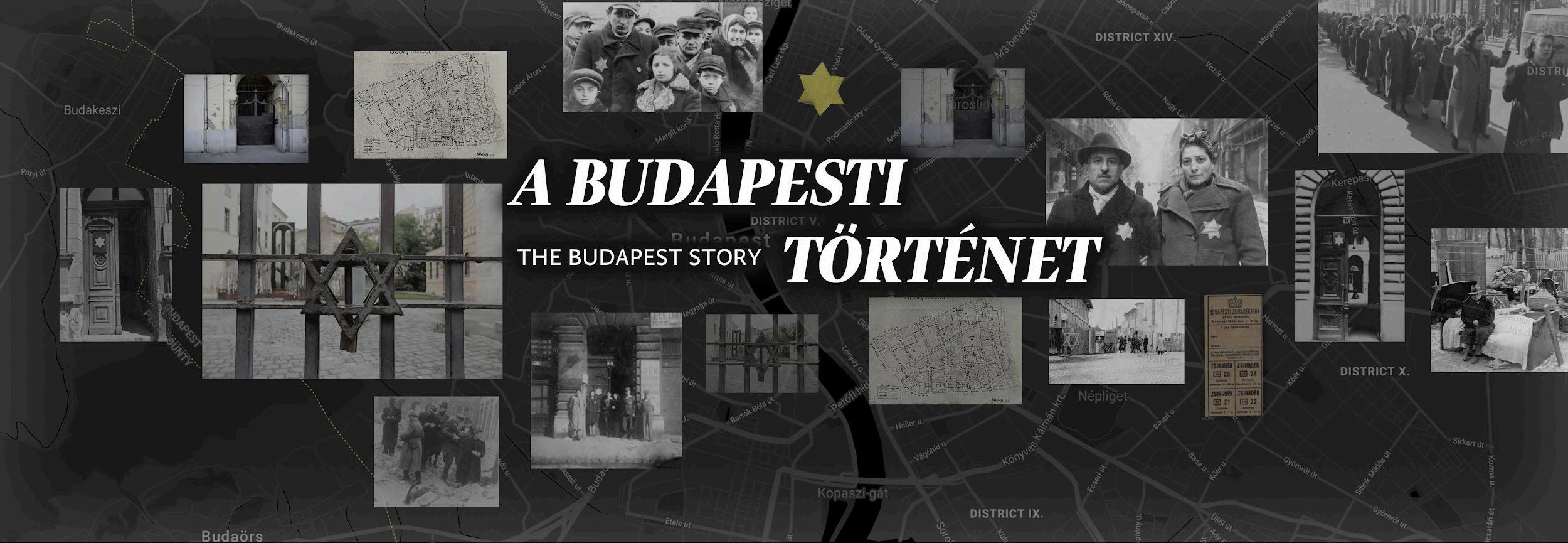
Rail with controller
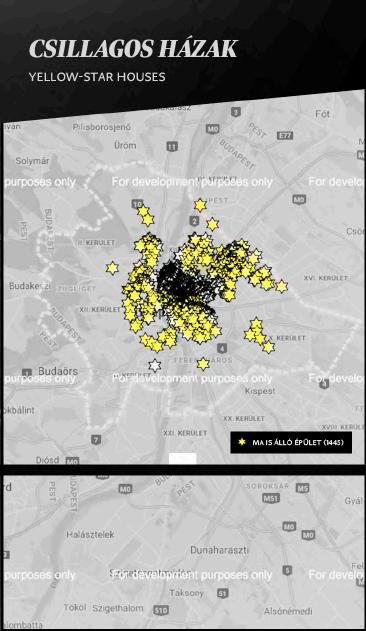
The attempt to emerge from the war also gave Budapest Jews a short ray of hope for survival. The Governor's proclamation was broadcast on the radio. This is symbolized by the multitude of radios sunk into the wall, from which the sound recording of the original proclamation can be heard.

INTERPRETIVE TECHNIQUE

1940s radios serve as props with a soundscape of the announcement of German defeat.
EMOTIONAL EXPERIENCE
DURATION .5 min. - for 50 min. visit .5 min. - for 90 min. visit .5 min. - for 180 min. visit

VISITOR TAKEAWAY
In the last months of the war, one last ray of hope appeared that the capital’s Jews could escape a final peril. Following this one day of hope, the Arrow Cross regime took power and Hungary sank into even deeper chaos.
Emotional Cognitive
and hiding the persecuted.

A mix of first-person account interviews with artifacts and environment recreations.



The surviving Hungarian Jews in Budapest recognized the tragic reality of the fate of their rural counterparts and tried to actively resist tyranny as much as possible.
Emotional Cognitive

Two exhibit areas show different methods of resistance and the saving of lives, such as collective protest against the discriminatory laws, forging of documents,
Average Hungarian citizens, some ecclesiastical persons, and several foreign diplomats, as well as institutions also joined in rescuing the Jews of Budapest. This part of the exhibition introduces visitors to the risks they took in their unique actions, their courage and the example they set.


A mix of first-person account interviews with artifacts and deep-content stations.


EMOTIONAL EXPERIENCE
DURATION
min. - for 50 min. visit 2 min. - for 90 min. visit 3 min. - for 180 min. visit


By learning firsthand about the horrors of the Arrow Cross regime, some ordinary citizens placed themselves in life-threatening situations in order to save their fellow human beings. Their actions are exemplary for us all.
Emotional Cognitive
The Thread of Jewish Life becomes a deep tunnel - foreboding and dark, featuring graphics, video and audio. The presentation is fast-paced and syncopated, invoking unease. An evocation of the Danube Memoria (shoes) lines the edge of the exhibit structure.


EMOTIONAL EXPERIENCE
DURATION
min. - for 50 min. visit 1.5 min. - for 90 min. visit 2 min. - for 180 min. visit

During this period, the remaining Budapest Jews were killed in the heart of the capital, in front of other citizens.
Emotional Cognitive
This Hungarian brand of totalitarian rule represents the apex of cruelty, madness, and arbitrariness. Anyone can be a victim at any time.4.15 ARROW CROSS THE HOLOCAUST













As a result of the Nazis’ desperate efforts to continue the persecution and killings, large numbers of Jewish groups were diverted on foot from Budapest to the western border; most of them died.
Pepper’s ghost effect, rear-illuminated graphic-panel layers are triggered by motion sensors as visitors walk by.


In the last days of the war, chaos and fanatical racism would decide the fate of thousands of people. Only a few survived the death marches due to inhumane conditions, mostly only with the help or encouragement of their peers.
EMOTIONAL EXPERIENCE
DURATION
.5 min. - for 50 min. visit
.5 min. - for 90 min. visit

.5 min. - for 180 min. visit
Emotional Cognitive















As visitors walk up the stairs, the tall walls present the names of all Hungarian communities impacted by the Holocaust. The names of these communities glow and are activated by visitors passing by.


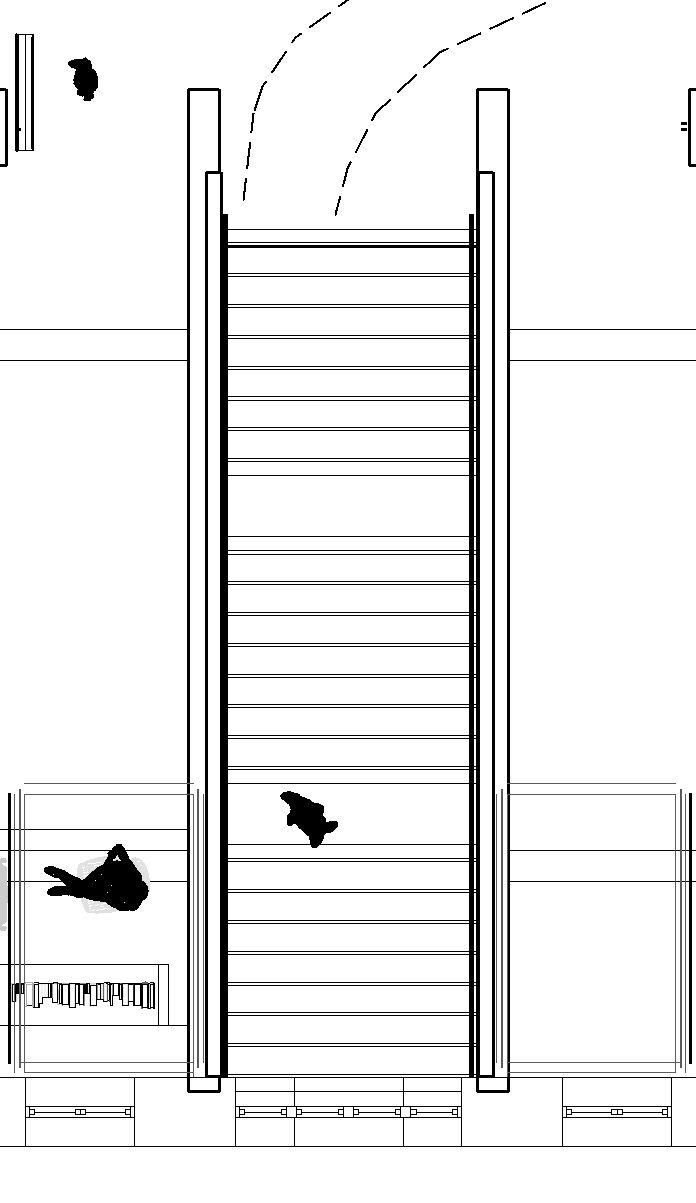
Rear-illuminated graphics with motion sensors.

VISITOR
Contemplation in the face of the enormous loss of human life







In the museum, visitors can also place their own objects / memorabilia, which can later be used for temporary exhibitions and installations related to the main exhibition themes.


Artifacts and graphics with QR codes.
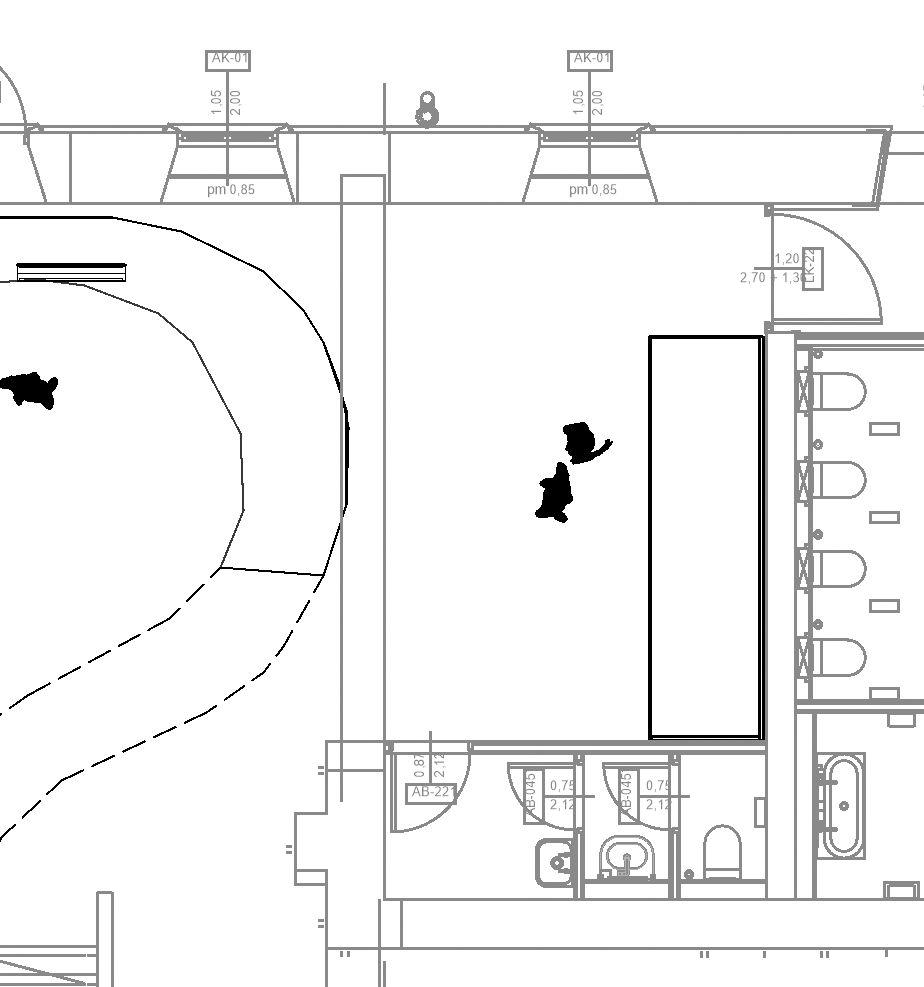
The basic content of the exhibition is still relevant today. With our own personal memories, we also have a duty to contribute to the collective memory.
An additional online platform where all the objects are listed and people from all over the world can share their objects and memories and search per type, date, country, etc.


Physical

Visitors walk through a field of basalt stones where the train tracks were. They walk past the building, listening to a multi-channel soundscape, while quotes and statistics appear on the brick wall of the former platform.
Transparent LCD screen with portraits
Brick wall with sign painted graphics
Soundscape, painted graphics on brick wall, transparent LCD video presentation, graphic panels.

Train station interpretive panel
Soundscape
VISITOR TAKEAWAY
EMOTIONAL EXPERIENCE
DURATION
1 min. - for 50 min. visit 2 min. - for 90 min. visit 5 min. - for 180 min. visit
Emotional Cognitive
Being where events took place carries deep emotional content of its own.








After the horrors of the Holocaust, surviving Hungarian Jews were faced with a difficult new reality: Looking for family and going back to a world that no longer was.

Media plinths with first person account interviews.

DURATION 1 min. - for 50 min. visit 1.5 min. - for 90 min. visit 2 min. - for 180 min. visit

For Holocaust survivors, the end of the war and liberation posed new challenges. They faced the loss of almost all the support of their family and past lives. All of this presented them with difficult dilemmas before restarting their lives.
For many, the immediate post-WWII era was a crossroads. Should the power of culture and belonging keep me in Hungary? Or is the trauma of the Holocaust too great, pushing me out to a new world and a different life?
Large-scale infographic with media plinths.


The aftermath of the Holocaust was shaping up to be a succession of hard choices.

Graphic elevation Images: Three individuals that stayed in Hungary and three that left. Background map: Locations to which Hungarians emigrated.


DESIGN

THE AFTERMATH
A secluded corner of the train station provides a space for additional content. Visitors are invited to watch a collection of videos, browse content on a tablet, and read printed material.
INTERPRETIVE TECHNIQUE
Linear media, tablet-format content and published content.


THE AFTERMATH
VISITOR TAKEAWAY

EMOTIONAL EXPERIENCE
Take the time to reflect.
Emotional Cognitive
The communist regime attempted to erase cultural and religious identities and make them a taboo. Deep silence about personal memories of World War II became common in many families. These taboos also affected the identity of the second and third generations of Hungarian Jewish families. The semi-enclosed part of the gallery shows a window into the story through a captivating video.


Immersive video content with sound.

VISITOR TAKEAWAY
Religion and culture can only be diminished, not erased.
Visitors have an opportunity to have virtual encounters with Holocaust survivors to better understand the multitude of experiences and responses to this traumatic event.

GALLERY 7
INTERPRETIVE TECHNIQUE
Media plinths with first person account interviews. Content station booths for additional storytelling.
VISITOR TAKEAWAY

EMOTIONAL EXPERIENCE
DURATION 2 min. - for 50 min. visit 3 min. - for 90 min. visit 5 min. - for 180 min. visit
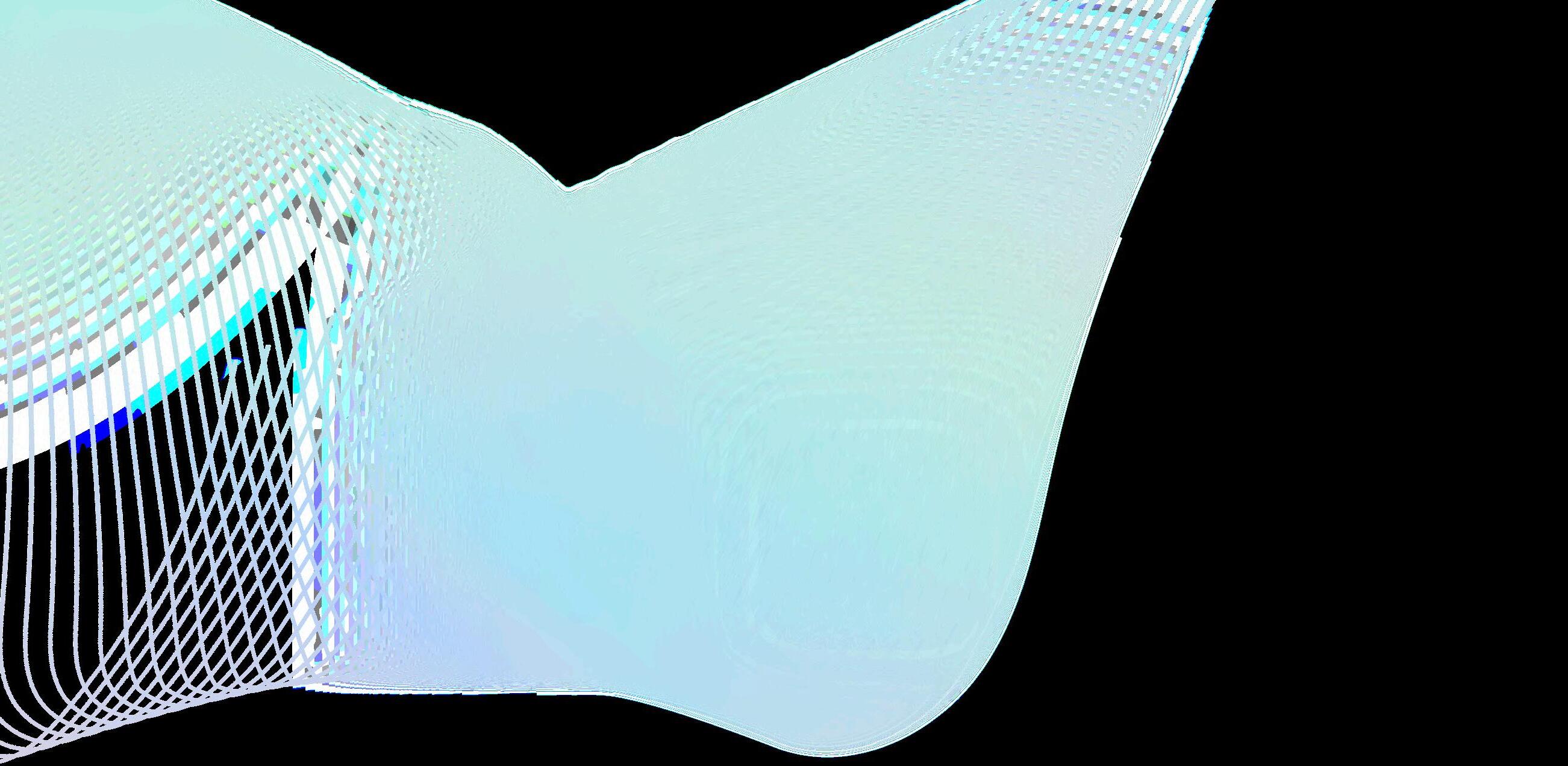

Emotional Cognitive
Dialogue between generations is critical to extend cultural reach.


Idle mode
6 interviews (1st, 2nd, and 3rd generation) will be featured in each pylon. In idle mode, interviewees cycle through and stare at the visitors. A prompt invites visitors to tap on the screen.
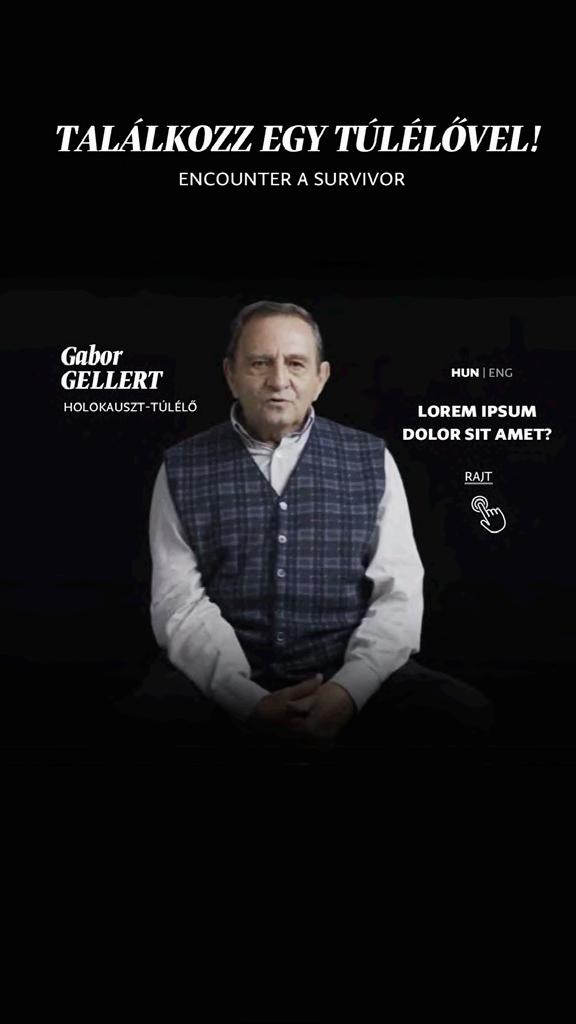
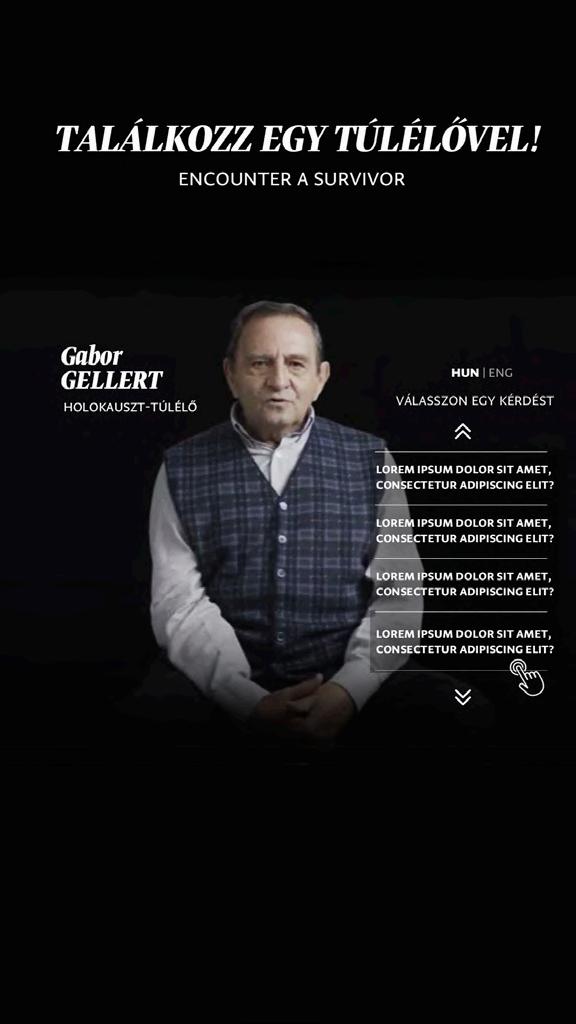
THE AFTERMATH
Activated
When a visitor touches the screen, a drop-down menu with a series of pre-curated questions appears for the visitor to choose from.
INTERPRETIVE TECHNIQUE
Media plinth with first-person account interviews.
EMOTIONAL EXPERIENCE
DURATION
0 min. - for 50 min. visit
.5 min. - for 90 min. visit


1 min. - for 180 min. visit
Vigilance against prejudice is always required.
Emotional Cognitive
Back of the screen


Large visible quote from one of the interviewees. Can be printed or rear-illuminated and be revealed when a visitor walks by.

Antisemitism continues to take its toll worldwide. How does Hungary fit into this context? What can we learn from the Holocaust to overcome hatred?
Visitors can talk to a rabbi present in person. They are given the opportunity to ask firsthand what the explanation and guidance of the Jewish religion is regarding the story of the Holocaust and in general. How does the Jewish community live in Hungary and in the world today?


Booth with seating and a media plinth controlled with an iPad.
Judaism is not only a community with a shared destiny of remembering the past, it is also a community of values with deep knowledge and an intellectual heritage that is active in today's Hungary as well
EMOTIONAL EXPERIENCE
DURATION
0 min. - for 50 min. visit 2 min. - for 90 min. visit 10 min. - for 180 min. visit
Emotional Cognitive

7.4
How does today's Hungarian Jewish community live with the legacy of the Holocaust? What are today's Hungarian Jews like? What are their communities, synagogues and educational institutions like?
INTERPRETIVE TECHNIQUE
Media plinths with touch interfaces. Range of contemporary, vibrant Jewish activities.

EMOTIONAL EXPERIENCE
DURATION
1 min. - for 50 min. visit 2 min. - for 90 min. visit 3 min. - for 180 min. visit

VISITOR TAKEAWAY
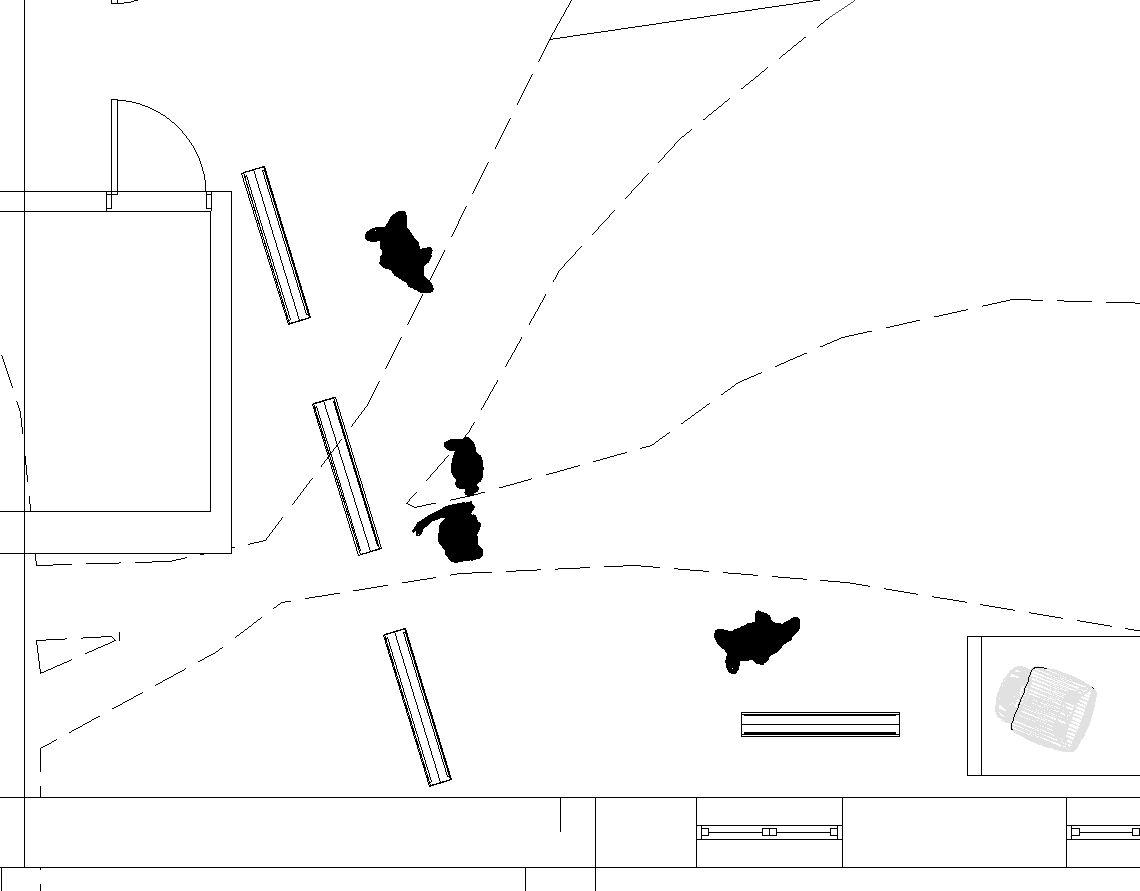
Emotional Cognitive
Today's Hungarian Jewish community has an enormous amount of positive energy. It is experiencing a renaissance of community activity.
Idle mode
In idle mode, a selection of images representing several Jewish topics cycles through the screen. A prompt asks visitors to start the interactive experience.




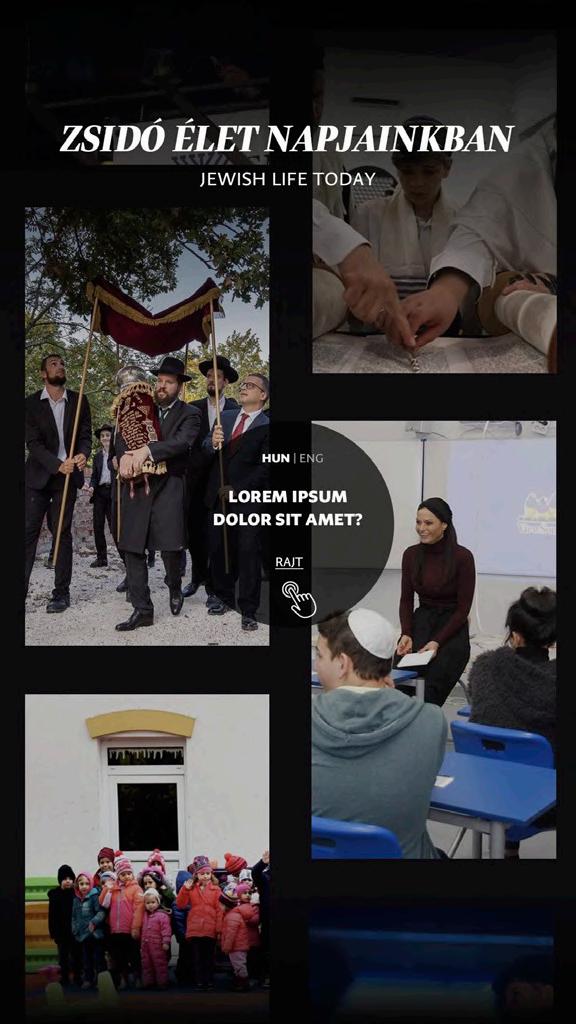

Activated
When a visitor touches the screen, a drop-down menu with a series of topics appears for the visitor to choose from.
Playing
After selection, the chosen topic expands into a full-screen video with narration.


Visitors are asked to tell or describe their experience of this exhibition in a short message. These messages, after pre-selection, will appear on the data statue in the stairwell.
Digital touch station for input.
VISITOR TAKEAWAY



This is now your story too.

Programmable LED stripes Respond to visitor input




Touchscreen display
1. Idle mode



When the screen is inactive, a prompt invites visitors to leave their mark. Keywords such as Hope, Faith, Love cycle through as inspiration.
2. Active mode

Visitors can share a personal message by text (a digital keyboard appears) or by drawing onto the screen (using a tethered stylus pen).
3. Message sent
Once visitors swipe up to “SEND,” their message transforms into particles of light, exiting the screen and traveling into the ToL sculpture.
